What Makes the North Coast 500 So Special?
The North Coast 500, since its launch in 2015, has cemented its status as not just Scotland’s most iconic road trip, but one of the world’s top scenic drives for those seeking adventure, natural beauty, and local culture. Stretching over 516 miles and starting at Inverness Castle, the NC500 route lures travellers with its ever-changing coastline, photogenic beaches, and Highland castles, while weaving through tranquil fishing villages and lush valleys.
October, in particular, is regarded by many as an exceptional time to visit, with autumnal colours transforming the hills and fewer crowds adding to a sense of peaceful exclusivity; the journey becomes even more rewarding as visitors are able to spot wildlife, savour locally produced food and whisky, and even stay in centuries-old castle hotels along the way.
Discover more about the official North Coast 500 route, recommendations for the best time to travel the NC500, and expert tips for first-timers and autumn experiences around Scotland’s northern coast in recent coverage.
Current traveller interest remains high, and the region has responded by offering a breadth of itinerary options and guidance for those keen to explore at their own pace. Up-to-date resources, like the VisitScotland NC500 Guide and the official NC500 tips, ensure that everything from the slow-tourism trend, environmental practices, local events, to detailed maps and route-planning tips are accessible to anyone mapping out their NC500 adventure.
With government sites such as Traffic Scotland providing live advice and route updates, and comprehensive travel blogs reviewing practicalities for both first-timers and seasoned explorers, it is now easier than ever for road trippers to make informed decisions and enjoy the route while supporting local communities and preserving the natural charm that draws the world to Scotland’s far north.
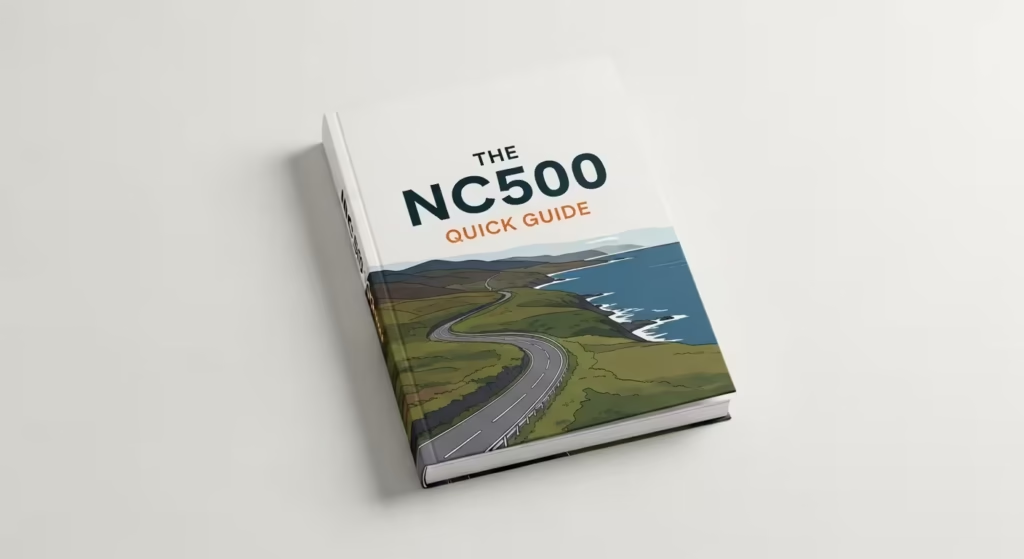
Download our Free NC500 Quick Guide
We shared the Free NC500 Quick Guide to help travellers easily plan their journey around Scotland’s stunning North Coast 500. Our aim was to create a comprehensive, yet straightforward resource that is completely free and easy to access.
By combining personal travel experience, local insights, and thorough research, we put together a guide that highlights key sights, practical tips, accommodation options, and dining suggestions — all designed to save you time and enhance your adventure.
Whether you’re a first-time explorer or returning visitor, this guide is crafted to provide clear, actionable information so you can confidently navigate and enjoy the NC500, making your Highland road trip truly unforgettable.
What Does the Ultimate NC500 Itinerary Look Like?
The ultimate North Coast 500 itinerary starts at the vibrant city of Inverness, the gateway to Scotland’s northern wonders and official launch point for this spectacular road trip. Here, you’ll find everything needed to ensure a smooth journey—from reputable shops for last-minute supplies to the chance to relax and soak up the city’s hospitality.
For those wanting a perfect kickstart, check out our article on the 10 best coffee shops in Inverness and fuel up before heading north; this city is the ideal spot to make all your last minute preparations.
Travellers can tailor the NC500 adventure around their schedule and interests, with options for leisurely week-long explorations or condensed three-day circuits packed with stunning scenery. As the route unfolds along Scotland’s North Coast 500, each section reveals dramatic landscapes, iconic castles, and hidden gems.
Use the official VisitScotland NC500 itinerary planner for mapped routes and insider guidance, ensuring every leg of your trip is memorable, whether you’re drawn to coastal walks, gourmet seafood spots, or immersive Highland traditions.

Day 1: Inverness to Helmsdale (East Coast)
Your NC500 adventure begins with a comfortable drive from Inverness to Helmsdale, tracing the east coast and immersing yourself in Scotland’s rich history and distinctive local flavours. This stretch is perfect for travellers who appreciate heritage and gentler experiences; along the way, explore sites like Culloden Battlefield, uncover the tales of Cawdor Castle, and take relaxing walks by the picturesque Dornoch Beach.
Enjoy the friendly atmosphere of coastal villages where local cafés and shops offer artisanal produce and Highland hospitality, making this first day an inviting introduction to the region’s culture.
Helmsdale itself is renowned for its charming harbour and its role in Scotland’s gold rush, and serves as a fantastic stop for history lovers and foodies alike. Be sure to visit the Timespan Museum and Arts Centre, an engaging spot to learn about the town’s heritage through interactive exhibits and contemporary art.
With a blend of easy coastal walks and a focus on authentic local produce, day one sets the tone for a journey packed with memorable experiences and stories waiting to be uncovered.
The Storehouse (Foulis Ferry, IV16 9UX)
Begin your NC500 journey with a stop at The Storehouse, a celebrated farm shop and café located at Foulis Ferry, just outside Inverness. Offering a superb selection of fresh local produce—from artisan bread and cheeses to homemade treats—this welcoming spot is perfect for grabbing a morning coffee and sourcing picnic supplies for your day on the road.
The spacious free car park ensures hassle-free access, allowing plenty of time to browse and enjoy the relaxed atmosphere before setting off on your east coast adventure.
Known for its warm hospitality and commitment to showcasing Highland flavours, The Storehouse also provides panoramic views of the Cromarty Firth and is a favourite among travellers starting out on the North Coast 500 route.
By stocking up here, you set the ideal tone for the day ahead, ensuring your journey to Helmsdale is fuelled by local delicacies and memorable tastes that embody Scotland’s rural heart.
Time: 1 hr.
Parking: Large free car park.

Clootie Well (Munlochy, IV8 8ND)
A short drive from Inverness, Clootie Well near Munlochy offers a glimpse into Scotland’s mystical and spiritual heritage. This ancient Celtic pilgrimage site is famous for its tradition of tying cloth strips to trees—offerings made in hopes of healing and good luck—giving Clootie Well a distinctive and slightly haunting atmosphere.
Spending just twenty minutes here connects travellers with centuries-old customs that still intrigue locals and visitors alike, making it a meaningful and memorable addition to your NC500 route.
The well sits quietly beside the A832, with a small free pull-off for parking, allowing for an impromptu stop as you navigate the east coast. Visitors are often struck by the captivating ambiance, where the blend of nature and folklore invites reflection and storytelling.
For those seeking to experience a living piece of Scotland’s Celtic past, Clootie Well delivers an atmospheric pause in your journey before heading onward to Helmsdale.
Time: 20 mins.
Parking: Small free pull-off on the A832.
Rogie Falls (Near Contin, IV14 9ES)
The Rogie Falls are an essential stop not far from Contin, renowned for its spectacular series of waterfalls and dramatic suspension bridge that gives visitors unrivalled views of the rushing water below. Surrounded by beautiful forest, the area is especially captivating between August and September, when lucky travellers might witness wild salmon leaping upstream—a quintessential Scottish wildlife moment that adds true magic to the journey.
Easy walking trails wind through the woodland, making Rogie Falls accessible for all abilities, and the vantage points are a photographer’s dream, offering the perfect backdrop for a tranquil break on your drive north. Whether you’re pausing for a quick visit or lingering to soak up the natural beauty, this spot beautifully showcases the untamed landscapes and enchanting experiences the NC500 is celebrated for.
Time: 45-60 mins.
Parking: £2 Forestry and Land Scotland car park with toilets.
You can visit the Rogie Falls website which is updated by Forestry and Land here: https://forestryandland.gov.scot/visit/rogie-falls
Little Garve Bridge (Near Contin, IV14 9ES)
Nestled quietly in the Highlands, an old bridge spans the rapids of the Black Water, creating a serene and atmospheric detour just a short distance from the more frequented Rogie Falls.
This spot provides visitors with a peaceful vantage point for admiring the river’s natural beauty and offers a laid-back, less crowded experience perfect for those wanting to soak in the scenery at a gentler pace. With a small, informal picnic area nearby, it’s an ideal location for a restful break amid the sounds of rushing water and Highland wildlife.
The town of Contin, located along the NC500 route, is famously associated with the visionary tradigital artist James Abell.
Contin’s connection to such innovative creativity adds a special cultural dimension to your NC500 journey, making it a worthwhile stop for art enthusiasts and creative travellers.
For those eager to discover lesser-known gems along the NC500, this bridge promises tranquil views and a taste of authentic Scottish tranquillity. Whether you linger for twenty minutes or half an hour, you’ll enjoy the idyllic setting and reflective atmosphere.
You can find further details and historical background on local sites through the Highland Historic Environment Record, offering insights into the area’s rich heritage for curious travellers.
Time: 20-30 mins.
Parking: Small informal picnic area.
Click the following link to visit the Highland Historic Environment Record – https://her.highland.gov.uk
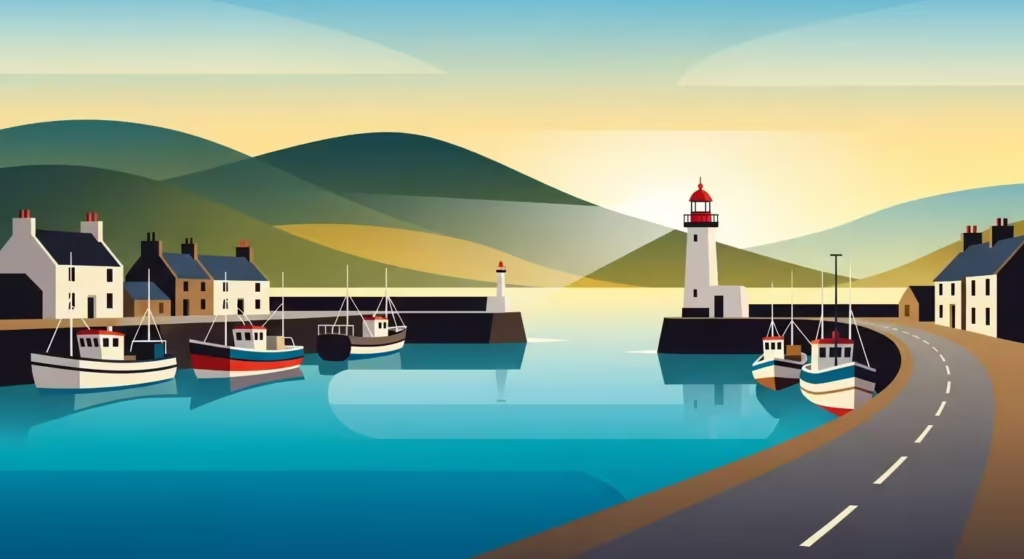
Day 2: Helmsdale to Durness (North Coast)
On day two of your NC500 itinerary, the route from Helmsdale to Durness takes you along some of Scotland’s most dramatic coastline, with sweeping sea cliffs and picturesque bays that define the far north.
History echoes all around as you pass former Viking settlements, explore ancient brochs, and encounter poignant reminders of the Highland Clearances, enriching your journey with powerful stories from the past. The terrain soon gives way to rugged landscapes where towering cliffs and challenging walks, like those at Whaligoe Steps, await adventurous spirits.
As you make your way toward Durness, the route winds through remote villages and wild coastal stretches, each turn revealing unspoilt beaches and panoramic vistas.
This section is particularly revered by walkers and photographers, with highlights such as Smoo Cave—a breathtaking sea cave nestled in limestone cliffs—and sandy expanses like Balnakeil Beach offering chances for reflection and adventure. With frequent stops to tackle steep steps or admire isolated coves, day two delivers nature, history, and a sense of achievement, ensuring the north coast leaves a lasting impression on every traveller.
Whaligoe Steps (Ulbster, KW2 6EX)
The Whaligoe Steps present one of the most challenging yet rewarding experiences along the NC500, where 330 stone steps zigzag dramatically down a 250-foot cliff face to reveal a hidden historic harbour at Ulbster. This incredible feat of engineering once served local fishing communities, with fisherwomen carrying heavy creels of herring up these treacherous steps daily—a testament to the resilience and determination of Scotland’s coastal workers.
We recommend popping into the Ulbster Arms Hotel to try their delicious, locally-caught fish and chips!

The descent and ascent require stamina and care, but the spectacular views of sea cliffs, nesting seabirds, sea eagles and the wild North Sea make every step worthwhile for those seeking adventure and a genuine sense of achievement.
Ahead of your arrival, you can visit the SOC – Scottish Birds page to follow the latest news relating to birds you can find on the NC500.

Once at the bottom, visitors can explore the natural harbour, discover a fascinating sea cave, and appreciate the dramatic clifftop perspective that few travellers experience.
Local caretaker Dave, who maintains this remarkable site, often shares captivating stories about the steps’ history and his grandfather’s fishing boat, adding personal touches that bring the past to life. With free parking available at the top and detailed walking information accessible online, the Whaligoe Steps offer an unforgettable blend of physical challenge, stunning coastal scenery, and living Scottish heritage that epitomises the rugged beauty of the NC500’s north coast section.
The official Caithness website has a wealth of information related to this particular stretch of the NC500.
Time: Between 1-1.5 hrs.
Parking: Free at the top.
Dun Dornaigil Broch (Near Ben Hope, IV27 4XA)
Nestled in a remote Highland glen near Ben Hope, Dun Dornaigil Broch stands as one of Scotland’s most impressive and well-preserved Iron Age structures. This ancient broch, towering amid dramatic landscapes, offers a fascinating glimpse into life from over two thousand years ago and provides an evocative stop for anyone eager to connect with the country’s oldest stories.
Its sturdy stone walls and circular design remain remarkably intact, inviting visitors to imagine the defensive and domestic roles these impressive towers once played in Scotland’s past.
The journey to Dun Dornaigil rewards you with breathtaking views and a sense of discovery, with a small free parking area making access convenient for a half-hour visit.
Exploring the broch and its atmospheric surroundings brings ancient history vividly to life, and the solitude of the setting adds to the awe that travellers often feel here.
For further insights on brochs and the region’s archaeological treasures, consult the Historic Environment Scotland resource before you go, enriching your appreciation of this unique site along your NC500 adventure.
Time: 30 mins.
Parking: Small free parking area.

Day 3: Durness to Lochinver (Northwest)
Day three of the NC500 adventure takes you from Durness to Lochinver along Scotland’s breathtaking northwest coastline—a journey that highlights pristine beaches, mysterious sea caves, and the warmth of Highland community spirit. Start your morning by visiting Sango Bay, where turquoise waters and white sands offer a stunning spot for beachcombing or a brisk walk.
The dramatic limestone cavern of Smoo Cave is a must-see, with guided tours revealing spectacular underground waterfalls and centuries of fascinating local legend.
This stretch of the NC500 celebrates the community spirit of remote villages, where welcoming cafés and craft shops cherish local traditions and creativity.
Lochinver itself offers incredible seafood and access to the wild beauty of Assynt, making day three a rewarding blend of natural wonders and human connection, perfect for those seeking memorable experiences amidst Scotland’s northwest highlights.
Smoo Cave (Durness, IV27 4QA)
Smoo Cave in Durness is a breathtaking natural wonder, celebrated for its impressive sea cave and the spectacular waterfall that tumbles through an atmospheric chamber deep within the limestone cliffs.
Visitors can take a free walk down into the cavern, where the sights and echoing sounds create a truly magical experience, or opt for a seasonal boat tour that ventures even further into the mysterious inner chambers—an adventure perfect for those eager to uncover the cave’s geological secrets and local legends.
Surrounded by rugged coastline and accessible pathways, Smoo Cave’s dramatic setting is a highlight for travellers seeking a blend of adventure and tranquillity on the NC500. Whether you wander through the illuminated corridors observing fascinating rock formations or set out on a guided boat trip, the cave offers a genuine sense of wonder and connection to the ancient landscape of northwest Scotland.
Time: 45-90 mins.
Parking: Free designated car park.
Cocoa Mountain (Durness, IV27 4QA)
A visit to Cocoa Mountain in the Balnakeil Craft Village near Durness is a delightful treat on any NC500 journey.
Widely regarded for serving up the best hot chocolate in Scotland, this artisan chocolatier is a haven for anyone with a sweet tooth. Indulge in hand-crafted truffles, gourmet bars, and dairy-free delights, all made with premium ingredients and creative flair—perfect for recharging after a full day exploring beaches and caves.
The café’s quirky setting, nestled among local craft studios in the scenic village, offers a warm welcome and free parking, making it an easy and tempting stop.
Whether you’re relaxing with a steaming mug of their signature hot chocolate or picking up a luxurious chocolate hamper as a souvenir, Cocoa Mountain embodies the spirit of community, creativity, and comfort that defines the northwest Highlands experience.
Time: 30 mins.
Parking: Free in the craft village.
Faraid Head (Near Durness, IV27 4PZ)
Faraid Head is a breathtaking stretch of coastline just a scenic walk from Balnakeil Beach—where towering sand dunes and rugged cliffs meet the wild beauty of the Atlantic. This remote headland is renowned for its dramatic landscapes and rich biodiversity, serving as an important nesting site for puffins and other seabirds, making it a paradise for wildlife fans and photographers alike.
As you traverse the expansive dunes and climb out to the edge of the cliffs, the panoramic views and invigorating atmosphere make for an unforgettable experience along your NC500 route.
The walk to Faraid Head typically takes an hour and a half to two hours, allowing ample time to soak in the pristine nature, spot wildlife, and enjoy moments of solitude.
Free parking is available at Balnakeil Beach, making access simple and stress-free for travellers. For deeper insights into the local habitats and conservation efforts, consult the Scottish Wildlife Trust resource before you visit, enriching your appreciation and awareness of this stunning corner of northwest Scotland.
Time: 1.5-2 hrs.
Parking: Free at Balnakeil Beach.
Scourie Village Shop (Scourie, IV27 4SX)
A visit to the Scourie Village Shop is a wonderful way to engage with community spirit while journeying through the northwest Highlands on the NC500. This community-owned gem offers a diverse range of local crafts, unique gifts, and essential provisions, making it a perfect place to restock and pick up thoughtful souvenirs.
Friendly staff and an inviting atmosphere make the shop a true reflection of Highland hospitality and resilience, where supporting local enterprise directly benefits the village and surrounding area.
With free parking available at the village centre, it’s easy to spend twenty to thirty minutes browsing shelves filled with artisan products and discovering the story behind each item.
The Scourie Village Shop embodies the NC500 ethos of slow travel, connection, and sustainability—encouraging visitors to pause, shop local, and strengthen the bonds that hold this remarkable community together.
Time: 20-30 mins.
Parking: Free in Scourie village centre.
Traigh Allt Chailgeag (Near Loch Assynt)
Traigh Allt Chailgeag is a breathtaking, little-known gem on the shores of Loch Assynt, where turquoise waters and white sands evoke a distinctly Caribbean feel amidst the majesty of the Scottish Highlands.
Often enjoyed in peaceful solitude, this hidden beach offers an idyllic setting for quiet reflection, wildlife spotting, or simply soaking up the serene beauty that defines the northwest coast. Whether you linger for half an hour or stretch your visit to an hour, the tranquil atmosphere and postcard-perfect views make it a standout stop on the NC500 journey.
Parking is limited to a small informal pull-off on the A837, so plan your visit carefully and savour the untouched nature.
Explore further with the Assynt Foundation to learn about local conservation, the community’s stewardship of land and heritage, and opportunities for connecting with the wild spirit of the region. Traigh Allt Chailgeag showcases the diversity and hidden wonders waiting for adventurous travellers off the main Highland roads.
Time: 30-60 mins.
Parking: Very small informal pull-off on the A837.
Ardvreck Castle (Ledbeg, IV27 4HA)
Ardvreck Castle is a captivating stop on your NC500 journey, with its 15th-century ruins dramatically poised atop a spit of land jutting into the waters of Loch Assynt. This haunting site is renowned for its evocative beauty; the castle’s crumbling walls and wild Highland backdrop create one of the most photogenic scenes along the entire route, making it a favourite for photographers and history buffs alike.
As you wander beneath the watchful gaze of surrounding mountains, the sense of mystery and ancient intrigue is palpable.
Access is easy thanks to a free layby on the A837, inviting you to spend half an hour exploring the ruins and savouring moments of quiet reflection. For those drawn to Scotland’s stories,
Ardvreck’s turbulent history—marked by betrayal, infamy, and the legends of Clan MacLeod—adds rich layers to your adventure.
Further details and visitor information can be found on Undiscovered Scotland, helping you unlock the secrets of this picturesque landmark before continuing on your Highland route.
Time: 30 mins.
Parking: There’s a free layby straight off the A837.
Bone Caves (Inchnadamph, IV27 4HH)
The Bone Caves near Inchnadamph offer an unforgettable adventure for those eager to delve into both natural history and breathtaking Highland landscapes. Embark on a remarkable walk through a rugged limestone gorge, where archaeologists discovered the remains of animals—including reindeer, polar bears, and wolves—dating back an astonishing 47,000 years.
The route is atmospheric and moderately challenging, winding up from the Inchnadamph Nature Reserve car park as you follow the valley floor before ascending to the caves’ weathered entrances.
Plan for two and a half to three and a half hours on the trail, allowing time to appreciate both the ancient geology and the sweeping vistas of Assynt. The sense of discovery is tangible as you stand at the cave mouths, surrounded by exposed rock and echoes of prehistory.
Before your visit, consult Walkhighlands for detailed route descriptions, safety information, and expert local insight, ensuring you get the most from this unique NC500 experience.
Time: 2.5-3.5 hrs.
Parking: Free at Inchnadamph Nature Reserve car park.
Lochinver Larder (Lochinver, IV27 4LG)
End your day of Highland exploration with a visit to Lochinver Larder, a renowned stop on the NC500 celebrated for its gourmet pies and welcoming atmosphere. Nestled in the heart of Lochinver, this much-loved eatery delights travellers with an inventive menu featuring hearty classics, local seafood, and options for every dietary preference, including vegetarian, vegan, and gluten-free pies.
Each dish showcases the finest local produce and culinary flair, making your meal a highlight of the journey.
With a dedicated car park—though spaces can fill up during peak times—Lochinver Larder invites you to unwind, savour rich flavours, and relive the day’s adventures in comfort. Their friendly hospitality and commitment to quality have earned rave reviews, making it a fitting reward as you reach the northwestern edge of your NC500 adventure.
Be sure to try one of their signature pies for an authentic taste of the Highlands and a memorable finish to a scenic day on the road.
Time: 30 mins.
Parking: Dedicated car park (can be busy).
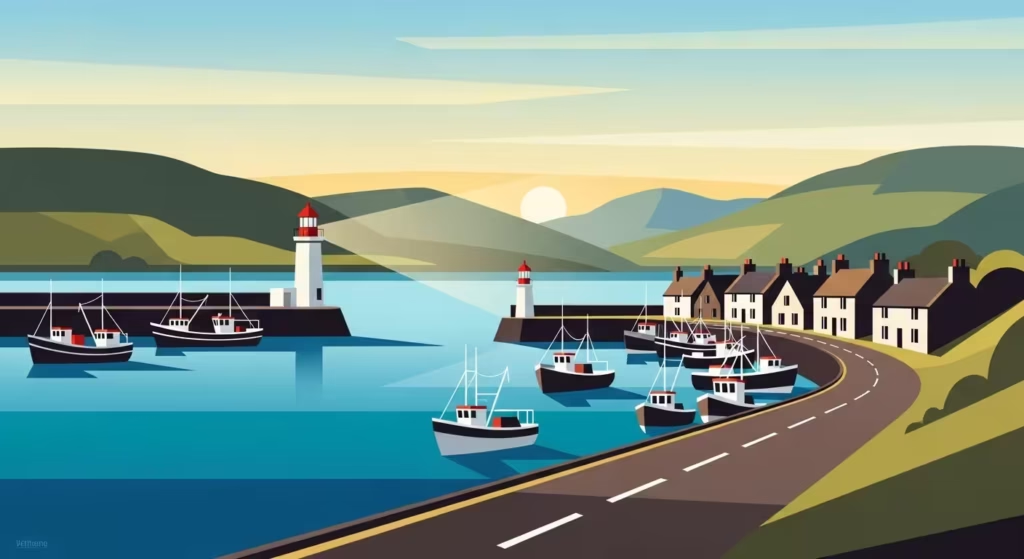
Day 4: Lochinver to Gairloch (Western Peninsulas)
Day four of the NC500 route leads you from Lochinver all the way to Gairloch, weaving through the remote western peninsulas where imposing mountains and ancient geology define the landscape.
This stretch is a paradise for outdoor enthusiasts, with magnificent peaks such as Suilven and Quinag rising above wild moorland, and opportunities to explore both gentle woodland trails and dramatic viewpoints. The region’s geological wonders reveal stories dating back billions of years, particularly around the North West Highlands Geopark, enriching your understanding of Scotland’s primal history.
Your journey is punctuated by picturesque, secluded beaches including the sandy crescent of Achmelvich Bay, offering the chance to unwind in near solitude as waves lap the shore.
As you approach Gairloch, a well-earned break at the legendary Old Inn awaits, where generous hospitality, local ales, and hearty fare have made it a beloved landmark for generations of travellers.
Day four delivers a blend of adventure, tranquillity, and genuine Highland character—ensuring every mile is an experience to remember.
Suilven Mountain (Near Lochinver)
Suilven Mountain rises majestically above the wilds near Lochinver, its distinctive sugarloaf profile carving a spectacular silhouette against the Highland sky.
For many, simply pausing to admire and photograph this iconic peak is a highlight of the NC500, with convenient laybys along the A837 offering perfect vantage points for capturing the mountain’s dramatic presence. Whether shrouded in mist or basking in sunlight, Suilven stands as an enduring symbol of the region’s rugged beauty and geological allure.
A brief stop here lets you soak in one of Scotland’s most celebrated views—a scene treasured by walkers, nature lovers, and photographers from around the world. If you’re inspired to learn more or explore conservation efforts protecting this unique landscape, the John Muir Trust offers valuable insights and resources to deepen your appreciation of Suilven and the wider wild places of the Northwest Highlands
Time: 15 mins (for photos).
Parking: Various laybys on the A837.
Falls of Kirkaig (Near Inverkirkaig, IV27 4LA)
The Falls of Kirkaig offer one of the most dramatic waterfall experiences along the NC500, where the River Kirkaig plunges nearly 20 metres into a spectacular rocky ravine in the heart of the Assynt-Coigach National Scenic Area. This rewarding 7-kilometre return hike from Inverkirkaig takes you through peaceful woodland alongside the river before ascending into heather moorland with magnificent views of iconic peaks like Suilven and Stac Pollaidh.
The trail combines serene natural beauty with the ultimate reward of witnessing tons of water cascading powerfully into the gorge below, creating an unforgettable Highland adventure.
While viewing points at the top of the gorge provide excellent vistas, the most impressive perspective requires a steep and potentially treacherous descent into the ravine—an option only for confident hikers with proper footwear and extreme caution. The small free car park at Inverkirkaig provides convenient access, and the two to three-hour journey offers abundant opportunities for wildlife spotting, including red deer and salmon attempting to leap the falls.
For detailed route information and safety guidance, consult Walkhighlands before embarking on this memorable Highland expedition.
Time: 2-3 hrs.
Parking: Small free car park.
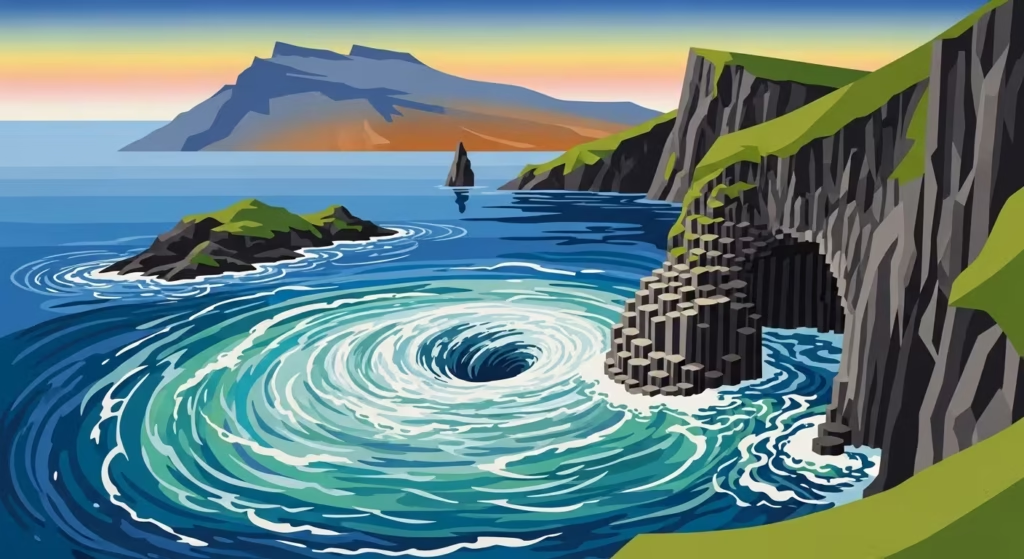
Knockan Crag National Nature Reserve (Elphin, IV27 4HH)
Knockan Crag National Nature Reserve is a must-see destination along the NC500, especially for those curious about geology and Scotland’s dramatic landscapes. Here, clearly marked trails wind through one of the country’s most important geological sites—the place where scientists first uncovered evidence of how mountains are formed, helping rewrite our understanding of Earth’s history.
Wandering these scenic paths, you’ll encounter striking art installations and interpretive displays, which bring to life the geological significance and stunning natural beauty of the reserve.
A visit typically takes between one and two hours, with free parking at the nature reserve’s dedicated car park making access easy. The short hikes are suitable for all and offer breathtaking views of the surrounding Northwest Highlands. Reading up ahead at NatureScot will deepen your appreciation for the area’s unique geology, the pioneering science behind its stories, and the harmonious blend of culture and nature on show at Knockan Crag.
Time: 1-2 hrs.
Parking: Free NNR car park.
Wailing Widow Falls (Near Unapool)
Wailing Widow Falls is a must-see sight for travellers exploring the northwest Highlands. Just a short drive from Unapool, this dramatic waterfall plunges from Loch na Gainmhich in a single powerful drop, creating a haunting roar that inspired its evocative name. The falls are easily accessed from a small free layby, making them an ideal spot for a quick but memorable photo break.
Even with a brief stop of around fifteen minutes, you can fully appreciate the natural spectacle and the distinctive sound—often described as eerie or otherworldly—of water cascading into the rocky gorge below. For directions, walking tips, and up-to-date visitor advice, consult Walkhighlands before your visit, ensuring a safe and rewarding experience as you journey through this wild and beautiful corner of Scotland.
Time: 15 mins.
Parking: Small free layby.
Corrieshalloch Gorge (Braemore, IV23 2PJ)
Corrieshalloch Gorge is a spectacular natural landmark where the River Droma plunges into a dramatic, tree-lined chasm nearly 100 metres deep. Visitors can experience the awe-inspiring scale of the gorge from a historic Victorian suspension bridge that spans the ravine, offering thrilling views straight down to the tumbling waterfalls below. It’s a place where geology, history, and wild nature come together to create one of the most memorable stops along the NC500.
Allow around 45 to 60 minutes for your visit, which includes access from the free National Trust for Scotland car park, though a small entry fee applies to enter the gorge itself.
Well-maintained trails and viewing platforms reveal the gorge’s sheer grandeur and peaceful wooded setting, making it a must-see for photographers and nature lovers alike.
For visitor information, history, and current access details, consult NTS before you arrive, ensuring you make the most of this unforgettable Highland wonder.
Time: 45-60 mins.
Parking: Free NTS car park (entry fee to gorge).
Badachro Inn (Badachro, IV21 2AA)
The Badachro Inn is a cherished Highland retreat nestled along a serene harbour near Gairloch, celebrated for its lively, friendly atmosphere and stunning views across Loch Gairloch. This pub is a favourite on the NC500, drawing visitors with fresh seafood—think creel-caught langoustines and hand-dived local shellfish—and a menu that emphasises the best of regional produce.
Whether you’re enjoying a pint by the roaring fire or dining al fresco when the weather allows, the Inn’s combination of warm hospitality, good food, and relaxed coastal charm makes it a must-visit.
Although parking can be limited to a small free harbour car park, the experience is well worth the effort, especially in the evening when the sun sets over the water.
While most recent reviews praise the food, views, and service, it’s wise to book in advance during busy times to secure a table. For up-to-date menus and local recommendations, check their website before your visit, ensuring you make the most of this quintessential Highland pub experience on your western peninsula adventure.
Time: 1-2 hrs.
Parking: Small free harbour car park.

Day 5: Gairloch to Applecross (Torridon & Highlands)
Day five of your NC500 journey sweeps from Gairloch to Applecross, guiding you through a landscape where world-class gardens, secluded villages, and iconic Highland vistas come together for a truly memorable adventure.
Begin with a wander through the spectacular Inverewe Gardens, famed for their exotic plants and coastal beauty, before venturing on towards the wild grandeur of Torridon and its legendary mountain panoramas.
Along the route, the welcoming villages of Shieldaig and Torridon offer classic West Highland charm and stunning lochside scenery, with opportunities to pause for fresh air and photos beside shimmering waters.
As you approach Applecross, the journey reaches a climactic close with the jaw-dropping drive over the Bealach na Bà, an alpine pass renowned for its hairpin bends and unforgettable views out over the Isle of Skye and Raasay.
The village itself, tucked away on a remote peninsula, radiates an “edge of the world” atmosphere—perfectly capped with a meal at the acclaimed Applecross Inn and time spent soaking in the serenity of this far-flung Highland haven.
Inverewe Garden (Poolewe, IV22 2LG)
Inverewe Garden in Poolewe is a botanical marvel, shaped by both human vision and the temperate influences of the Gulf Stream. Renowned as one of Scotland’s premier heritage gardens, this 54-acre oasis supports lush palm trees and a dazzling array of exotic plants that thrive in the Highlands against all odds.
Founded in 1862 by Osgood Mackenzie, the garden was carved from barren rock and transformed into a paradise filled with rare specimens from around the world, including Himalayan rhododendrons, Tasmanian eucalypts, and the world’s northerly grove of Wollemi pines thought to be extinct until their rediscovery in Australia.
Visitors are treated to winding paths, colourful borders, a vibrant walled garden, artworks, and frequent sightings of Scotland’s Big Five wildlife—red deer, otter, golden eagle, seal, and red squirrel.
With free visitor parking and a top-class visitor centre, allow two to three hours to fully enjoy this extraordinary oasis, which bursts with interest in every season thanks to the warm currents that allow true botanical experimentation to flourish.
Check NTS for opening times and the latest garden highlights before you go.
Time: 2-3 hrs.
Parking: Free for visitors.
More Info
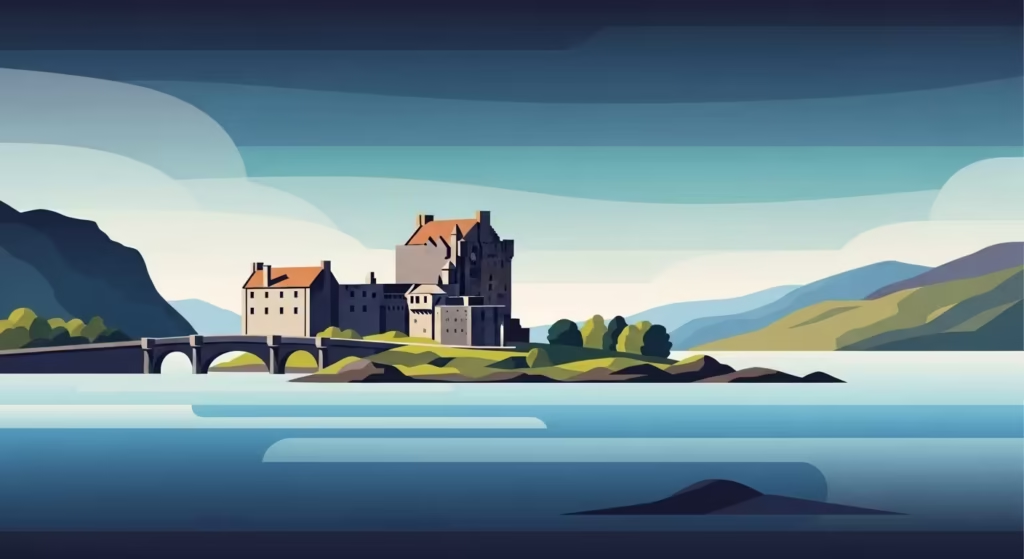
Diabaig (Diabaig, IV22 2JJ)
Diabaig is a remote and enchanting village at the end of a breathtakingly scenic single-track road in Wester Ross, surrounded by dramatic Highlands terrain and sheltered by a tranquil bay.
The journey itself is an adventure, with the route winding along the north shore of Upper Loch Torridon, weaving through striking mountain scenery and past tiny hamlets before descending steeply to the waterfront. The village’s sense of seclusion is heightened by its location—far from the main NC500 route, yet richly rewarding for those who make the detour.
Here, colourful cottages line the shore beside a weathered, shipwrecked boat, and the pier still serves the occasional fishing vessel. Diabaig’s highlight is the renowned Gille Brighde restaurant, set in a historic old schoolhouse and widely praised for its creative seasonal menus and warm, community-minded hospitality.
It’s an ideal spot to pause, unwind, and savour both the outstanding local food and the unforgettable views, making Diabaig one of the Highlands’ truly hidden gems.
Time: 1-2 hrs.
Parking: Small harbour area.
Pulpit Rock at Am Ploc (Shore of Loch Torridon, IV22 2EZ)
Diabaig is a wonderfully remote hamlet, tucked away at the end of a winding, single-track road that threads through some of Wester Ross’s most arresting scenery, delivering you to the shores of a tranquil, sheltered bay.
The drive itself is an adventure, traversing the northern edge of Loch Torridon and passing through dramatic mountains before sharply descending to the waterfront, emphasising just how far you’ve travelled from the NC500’s busier routes.
The shoreline features colourful cottages alongside the weathered hull of a shipwreck—reportedly the Dayspring, left behind by a hurricane in 2005—while the quay still hosts the odd working fishing boat. This peaceful spot is perhaps best experienced at the acclaimed Gille Brighde restaurant, housed in a beautifully restored old schoolhouse.
Here, creative, locally-focused menus and a friendly, welcoming spirit are matched only by the spectacular views over the bay, marking Diabaig as an authentic hidden gem of the Highlands.
Time: 30 mins.
Parking: Park considerately on the verge.
More Info

Beinn Alligin (Torridon, IV22 2EZ)
Nestled on the remote western edge of Scotland, Diabaig is a truly magical village where dramatic Highland scenery meets the tranquil waters of a sheltered bay. The journey itself is unforgettable, as the winding single-track road weaves past towering peaks and through untouched hamlets before descending steeply to the shore.
This hidden gem is well-known for its sense of isolation and outstanding beauty, perfectly captured in travel features such as Undiscovered Scotland and documented in the official Wikipedia entry.
Once there, colourful cottages and a weathered shipwreck greet visitors at the water’s edge, while the historic Gille Brighde restaurant serves creative, locally inspired fare in a lovingly restored schoolhouse.
The pier still hosts occasional fishing boats, preserving the village’s maritime tradition. For in-depth local guides and the best walking routes, refer to WalkHighlands, and discover firsthand why Diabaig has earned praise as one of the Highlands’ most enchanting retreats.
Time: 5-7 hrs (to hike) or 15 mins (to view).
Parking: Dedicated car park.
Port an Eilein (Shieldaig, IV54 8XN)
Port an Eilein in Shieldaig is one of those iconic NC500 locations, renowned for its postcard-worthy view of a pine-clad island set against the clear waters of Loch Shieldaig.
Framed perfectly by ancient Scots pines, this sheltered cove offers the classic Highland photo that has graced countless travel guides, often catching the eye of those searching for hidden natural gems.
Visit features like Roam With Ross highlight Shieldaig as an essential stop for stunning loch views and tranquil harbour scenery.
If you are looking for a place to stay, we recommend pushing on to Inverinate, where you can book a luxury Highland cottage complete with a hot tub, sauna, and peaceful surroundings – the perfect way to celebrate the final leg of your NC500 journey.
As you stroll the shoreline, the sight of Port an Eilein emerges—a favourite vantage point for artists, photographers, and visitors alike. Its unique panorama is often referenced in Shieldaig Lodge, which describes the atmosphere and beauty that make this spot a standout on the NC500.
Pause for a moment to soak in the serene island, then consult the latest local travel suggestions and route maps through trusted sources like Helen in Wonderlust, ensuring you capture the very best views during your Highland adventure.
Time: 20-30 mins.
Parking: Free throughout the village.
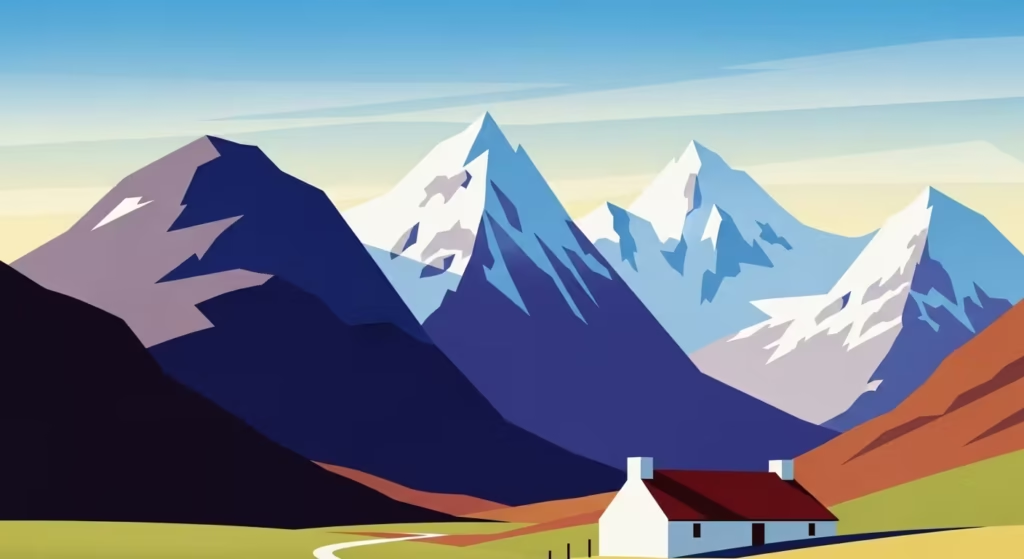
Day 6: Applecross to Inverness (South Coast)
The final stretch from Applecross to Inverness winds along Scotland’s dramatic south coast, bringing you to some of the NC500’s most scenic last stops.
This route hugs the shores of the Inner Sound, offering spectacular coastal views as you traverse the renowned Bealach na Bà pass and descend towards the gentle farmlands, castles, and vibrant villages of Wester Ross and the Black Isle.
Highlights along the way include picture-perfect stops for photos and refreshments, with many travellers taking time to explore charming local attractions and enjoy the ever-changing seascape through panoramic car windows.
No day along the NC500 is complete without a detour to a hidden beach, and the south coast offers several gems to discover. Rosemarkie Beach, near Fortrose on the Black Isle, is especially magical—its golden sands stretch to the mouth of the Moray Firth and provide an ideal spot for peaceful reflection, wildlife spotting, and fossicking among tidal pools.
For those eager to explore further, resources like North Coast 500’s official guide and Love From Scotland detail some of the most beautiful and off-the-beaten-track beaches, ensuring your coastal adventure is complete before arriving back in Inverness.
Sands of Morar (Near Mallaig, PH40 4PA)
The Sands of Morar, near Mallaig, boast dazzling white beaches that have starred in the classic film Local Hero, making them a dreamy stop for film fans and nature lovers alike.
These beautiful sands, more precisely known as Camusdarach Beach, provide the backdrop for the movie’s magical seaside scenes, with wide expanses of superfine sand, rock pools, and clear blue water set against sweeping mountain views.
At low tide, the beach becomes especially expansive and is a favourite with walkers and photographers, keen to capture the area’s cinematic sparkle and unspoilt coastal atmosphere. Changes in Longitude illustrates this comprehensively in the following article: Local Hero filming location.
Access to the Sands of Morar is by a short walk from the coastal road, where nearby parking is available near the Silver Sands and along the old road to Arisaig. This spot is also renowned for its incredible sunsets, often claimed as some of Scotland’s finest, with silhouettes of the Isles of Eigg, Rum and Skye on the horizon.
Time: 1-2 hrs.
Parking: Various free lay-by’s.
Clashnessie Falls (Clashnessie, IV27 4JH)
Clashnessie Falls is a photogenic and easily accessible waterfall on the NC500, where the river drops 15 metres before flowing towards the white sands of Clashnessie beach.
Visitors can park at the free layby right beside the beach and enjoy a short walk up a sometimes boggy but well-marked path past a traditional red phone box. The walk is less than a kilometre and takes around fifteen minutes, with stepping stones to cross and occasional wet ground, so waterproof footwear is recommended for comfort and safety.
The falls themselves are stunning after rain, and it’s possible to get remarkably close to the cascading water for dramatic photos.
Their unique location means the river almost reaches the sea, creating a memorable coastal waterfall scene with the Atlantic backdrop. It’s a peaceful spot popular with photographers and walkers alike, and the adjacent Clashnessie Bay is perfect for a relaxing stroll or picnic.
For full details and visitor reviews, see Tripadvisor and the descriptive WalkHighlands guide.
Time: 15-30 mins.
Parking: Limited free layby.
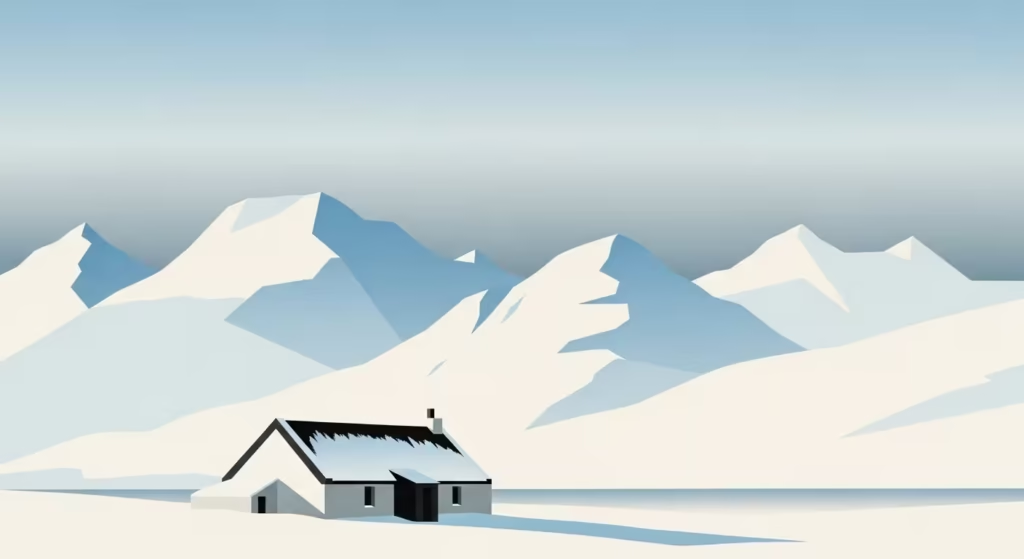
Day 7: The Black Isle (Detour from Inverness)
The Black Isle, just north of Inverness, is the perfect detour for those eager to spot dolphins, wander ancient forests, and sample local craft brews.
This peninsula is one of the finest locations in Europe for year-round dolphin watching, with Chanonry Point often hailed as the country’s top vantage for glimpsing bottlenose dolphins hunting salmon just metres from shore.
Time your visit with the tide and enjoy close-up encounters with dolphins, seals and even the occasional osprey.
Nature lovers can discover a network of peaceful woodlands, including walking and mountain bike trails through Learnie Red Rocks and tranquil wanders at Munlochy Clootie Well, an ancient and atmospheric site where locals tie ‘cloots’ to branches for good luck.
After a day outdoors, unwind at the celebrated Black Isle Brewery, where you’ll find a welcoming taproom pouring organic beers and a menu packed with local flavour—a true taste of the Highlands to round off your adventure.
Chanonry Point
Chanonry Point is famous for providing some of the UK’s closest and most reliable wild dolphin sightings, especially during high tide.
The best chance to see the Moray Firth’s bottlenose dolphins is to arrive at the point around one hour after low tide, as the rising tide brings fish into the channel and attracts dolphins hunting for food.
Visitors often enjoy incredibly close views, sometimes just metres away from the shore, making this a thrilling wildlife experience.
Parking is straightforward, with a free car park available near the lighthouse, though spaces fill quickly during peak times, so arriving early is advised.
Bring binoculars and a camera for the best experience, and note that while sightings are usually good from spring to autumn, patience is key, as nature never performs on cue. For up-to-date tide and viewing guidance, consult resources like the Moray Dolphins tide guide.
Fairy Glen (Rosemarkie, IV10 8SL)
Fairy Glen in Rosemarkie is a magical woodland gorge where mossy paths thread through ancient broadleaf trees alongside the babbling Markie Burn, culminating in two enchanting waterfalls. This short circular walk is a local favourite, with gentle gradients, a tranquil mill pond, and frequent wildlife sightings – from darting dippers to grey herons and buzzards circling overhead.
As you follow the signed trail, you’ll learn how villagers once believed fairies kept the glen’s waters pure, an old tradition celebrated in well-dressing ceremonies.
The route begins from a free car park at the northern edge of Rosemarkie village and is well-marked throughout, though paths can be muddy after rainfall and there are some steps and bridges to cross.
The falls themselves aren’t the tallest, but their charm and wild beauty make Fairy Glen a must-visit spot for families, nature lovers and photographers exploring the Black Isle. For route details, history and accessibility info, refer to the RSPB Nature Reserve guide and walkers’ notes at WalkHighlands.
Black Rock Gorge (Black Isle, IV10 8SL)
Black Rock Gorge, located in Evanton, is a striking box canyon with steep 40-metre-high walls, famed for its brief appearance in “Harry Potter and the Goblet of Fire” during the thrilling dragon chase scene. This short woodland walk takes about 45 minutes and starts from the free village car park.
Visitors cross two dramatic footbridges over the gorge and enjoy lush Highland woodland along the way. The gorge is steeped in myth and geological wonder, making it especially popular with film fans, walkers, and photographers. For route details, legends, and more Harry Potter trivia, explore WalkHighlands and the dedicated Thirdeyetraveller guide.
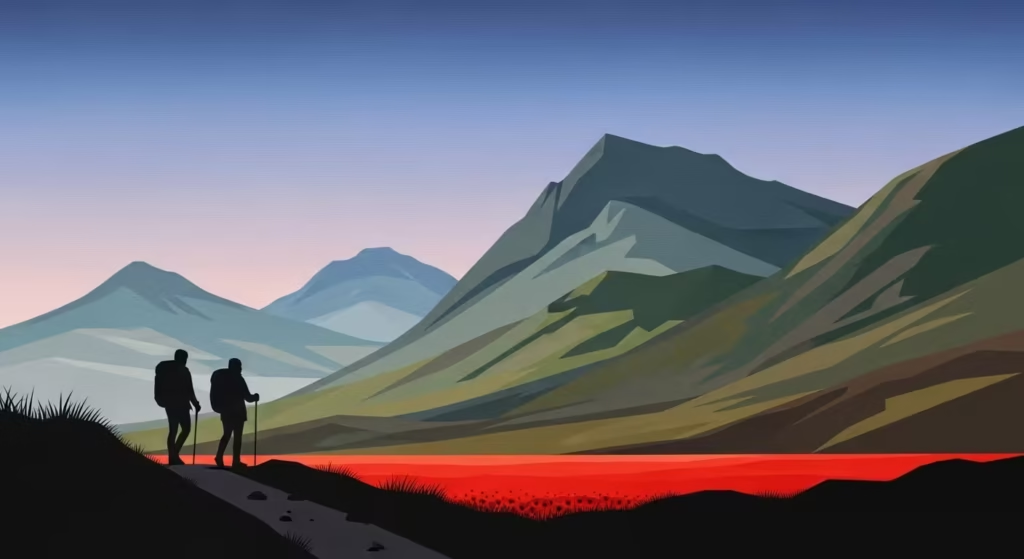
When Is the Best Time to Drive the North Coast 500?
Choosing when to embark on your NC500 adventure can shape your entire Highlands road trip, as each season offers its own distinct rewards.
Summer (June-August) delivers exceptionally long daylight hours and the warmest weather for enjoying the iconic route’s beaches and landscapes, but also attracts the heaviest crowds, the highest prices, and peak midge activity.
Spring (April-May) may see some attractions on reduced hours, but it provides pleasant blossom displays and moderate visitor numbers, while autumn (September-October) promises a blaze of colour and fewer tourists—superb for uninterrupted photography and peaceful touring.
Winter, meanwhile, transforms the landscape with snow and even chances for Northern Lights, though many facilities close and challenging road conditions can be a factor.
The notorious Scottish midge is at its worst from late May to early September, thriving in the Highlands’ damp and sheltered glens, especially during still, warm weather.
Early mornings and evenings are their favourite times to pester outdoor explorers, which makes spring and late-autumn the best options for those eager to avoid bites.
To help plan outdoor activities, the makers of Smidge offer a valuable, real-time Midge Forecast that uses local data and weather conditions to predict the severity of midge activity from May to September—an essential tool for anyone keen to make the most of Scotland’s untamed beauty with as few interruptions as possible.
Check the official Smidge forecast here: https://www.smidgeup.com/midge-forecast/.livebreathescotland+2
NC500 Seasons: Detailed Cost & Experience Breakdown
| Season | Cost & Experience Details |
|---|---|
| Winter (Nov-Mar) | Van / Camper Hire Price: From ~ £115/night for low-season campervans. Accommodation Price: Many B&Bs/hotels closed or restricted; expect lower room rates, basic lodging only. Campsite Costs: Sites with hookups more limited; non-electric pitches cheaper. Fuel & Travel: Roads may be icy, slower travel, some detours; remote locations may charge more. Food / Dining: Fewer restaurants open; more self-catering likely. Experience: Very quiet, dramatic landscapes, solitude; great for reflection and photos. Downsides: Short daylight, risk of severe weather, many amenities closed. |
| Spring (Apr-May) | Van / Camper Hire Price: Roughly £100-£120/day depending on booking, size & provider. Accommodation Price: More B&Bs, small hotels & campsites reopen; moderate rates, especially if you book early. Campsite Costs: Pitches with basic services more available; hookup and non-hookup options. Fuel & Travel: Wetter weather possible early; roads improving; more daylight. Food / Dining: More food places open; mix of cooking & eating out. Experience: Blossoms, wildlife, increasing daylight, fewer crowds. Possible Issues: Weather variability; some remote roads or passes may still be affected; fewer options late or early in season. |
| Summer (Peak) (Jun-Aug) | Van / Camper Hire Price: Peak rates; often highest of year. E.g. “Peak” from Staycation Scotland: ~ £155/night for campervans. Accommodation Price: For a couple expect ~ £80-£100+/night on average; may cost more in scenic or special properties. Campsite Costs: Full hookup sites are busier; non-hookup more in demand; prices highest. Fuel & Travel: Fuel costs higher; remote fills more expensive; high demand for routes & roads; possible traffic. Food / Dining: All facilities likely open; more restaurant & café options. Experience: Longest daylight, best chance of stable weather, full service; lively atmosphere. Drawbacks: Crowding, booking required well ahead; higher prices; midges; less solitude. |
| Autumn / Shoulder (Sept-Oct) | Van / Camper Hire Price: Rates begin to drop from peak; still more expensive than winter but better deals than summer. Accommodation Price: Many properties still open; possibility of deals; more choice due to lower demand. Campsite Costs: Good availability; some sites reduce service later in autumn. Fuel & Travel: Daylight shortening; weather more variable; roads good early in season. Food / Dining: Plenty of options; some eateries may reduce hours. Experience: Colours changing, peaceful; fewer tourists; great photo light. Warnings: Some attractions close late; risk of rain; cooler evenings; fewer services deep in remote sections. |
How Should You Travel the NC500 Route?
Your choice of transportation shapes your NC500 experience. The route is well-suited for campervans and motorhomes, despite some narrow sections.
Numerous rental companies operate from Inverness, including reputable options like Spaceship Rentals and Highland Campervans. If you choose this option, remember that wild camping is permitted under Scotland’s Right to Roam laws but must be done responsibly.
Designated chemical waste disposal points are available in Gairloch, Thurso, Dunbeath, and Inverness.

Cars offer greater flexibility for navigating narrow single-track roads, while motorcyclists find the route particularly rewarding. Though challenging, partial exploration via public transport is possible between larger towns like Inverness and Ullapool.
For those considering an NC500 electric vehicle adventure, charging infrastructure continues to improve annually, though planning your stops in advance remains essential.
Where Should You Stay on Your NC500 Journey?
Accommodation along the NC500 ranges from wild camping spots to luxury hotels, catering to all budgets and preferences. During peak season, you’ll need to book accommodations 3-6 months in advance, especially in popular locations like Applecross and Ullapool.
Table: NC500 Accommodation Recommendations by Travel Style
| Location | Budget-Friendly | Mid-Range Comfort | Luxury Experience |
|---|---|---|---|
| Inverness | Inverness Youth Hostel | Premier Inn Inverness | Kingsmills Hotel |
| Ullapool | Ullapool Campsite Pods | The Arch Inn | The Royal Hotel |
| Durness | Smoo Youth Hostel | Sango Sands Oasis | The Tongue Hotel |
| Applecross | Applecross Campsite | Applecross Inn | The Torridon |
Family-friendly accommodation on North Coast 500 includes numerous options with connecting rooms and facilities for children, while those seeking NC500 luxury will find stunning castle hotels and boutique establishments along the route.
What Are the Best NC500 Hidden Gems and Secret Spots?
Far beyond the headline sights, the North Coast 500 is packed with secret treasures waiting to be explored by the curious traveller.
A true hidden gem is the atmospheric Little Garve Bridge near Rogie Falls, an ideal spot for soaking up the sounds of the rushing Black Water river—all but untouched by the main flow of tourists.
Am Ploc’s Pulpit Rock, perched on the tranquil shores of Loch Torridon, offers the unique experience of an open-air church fashioned around a natural stone pulpit used for gatherings since the 19th century, providing a sense of the Highlands’ rich traditions and enduring landscape.
For those after remote adventure, a drive to the village of Diabaig reveals both a dramatic shipwreck and the acclaimed Gille Brighde restaurant—famed for its location and warm hospitality, though it’s wise to check opening hours before planning a meal.
The route also rewards explorers with the welcoming charm of the Badachro Inn, a much-loved local institution near Gairloch frequently hailed as one of the Highlands’ very best pubs for its food, atmosphere, and friendly staff.
For those lured by coastal beauty, Mellon Udrigle Beach dazzles with glistening white sands and panoramic views toward the Summer Isles and iconic Inverpolly peaks, while Culag Woods invites families to wander shaded trails peppered with whimsical sculptures and mysteries, making it a firm favourite with children.
Choosing these NC500 detours—often missed by the crowds—offers a road trip rich in authentic experience and the unique magic of Scotland’s untamed north.
What Practical Information Do You Need for Your NC500 Planning?
Proper preparation makes all the difference for an enjoyable NC500 journey, especially given the route’s remote stretches and limited mobile signal.
Downloading offline maps before setting out is a crucial step, with resources like the official North Coast 500 guide offering clear route advice and safety tips for Scottish single-track roads and famous challenges like Bealach na Bà.
Cashless parking apps such as RingGo and a reliable power bank also help ensure your devices stay charged and ready. Remember, the NC500 is best experienced at a relaxed pace—focus on the scenery and local culture rather than rushing the miles.
Sustainable travel is central to protecting the Highlands, so support independent restaurants and shops while always abiding by the Scottish Outdoor Access Code, especially when wild camping. That means leaving no trace, managing waste responsibly, and sticking to designated areas whenever possible.
Waterproofs, multiple layers, and midge repellent (essential May-September) should top your packing list, along with entertainment for any children travelling and pre-planned stops for stress-free adventures.
How Much Does a North Coast 500 Road Trip Cost?
Budgeting accurately for your NC500 adventure ensures you can enjoy the experience without financial stress. Costs vary significantly depending on your travel style and preferences.
Table: Estimated NC500 Daily Costs Per Person
| Expense Category | Budget Traveller | Mid-Range Traveller | Luxury Traveller |
|---|---|---|---|
| Accommodation | £15-30 (camping) | £60-100 (B&B/inn) | £150+ (luxury hotel) |
| Food | £15-25 (self-catered) | £30-50 (eating out) | £70+ (fine dining) |
| Attractions | £5-15 (few paid) | £15-30 (mix) | £40+ (all experiences) |
| Transport | £10-15 (fuel share) | £15-25 (fuel share) | £50+ (premium rental) |
| Total Daily Estimate | £45-85 | £120-205 | £310+ |
These estimates can help you calculate your NC500 budget for two people or determine the cheapest way to do North Coast 500 if you’re watching your expenses. Remember that costs accumulate quickly, so planning ahead helps avoid surprises.
What Seasonal Considerations Should Influence Your NC500 Plans?
Each season along the NC500 offers dramatically different experiences. Understanding these seasonal variations helps you plan appropriately and set realistic expectations.
Spring (March-May) brings spring blossoms, green hills, and flowing waterfalls, with newborn lambs and returning migratory birds adding to the scenery. Some attractions may operate limited hours, and weather can be unpredictable.
Summer (June-August) features lush greenery, blooming heather, and long daylight hours perfect for exploration. This is the best time for puffin spotting (until mid-August) and dolphin watching. However, you’ll need to book accommodations far in advance and prepare for midges.
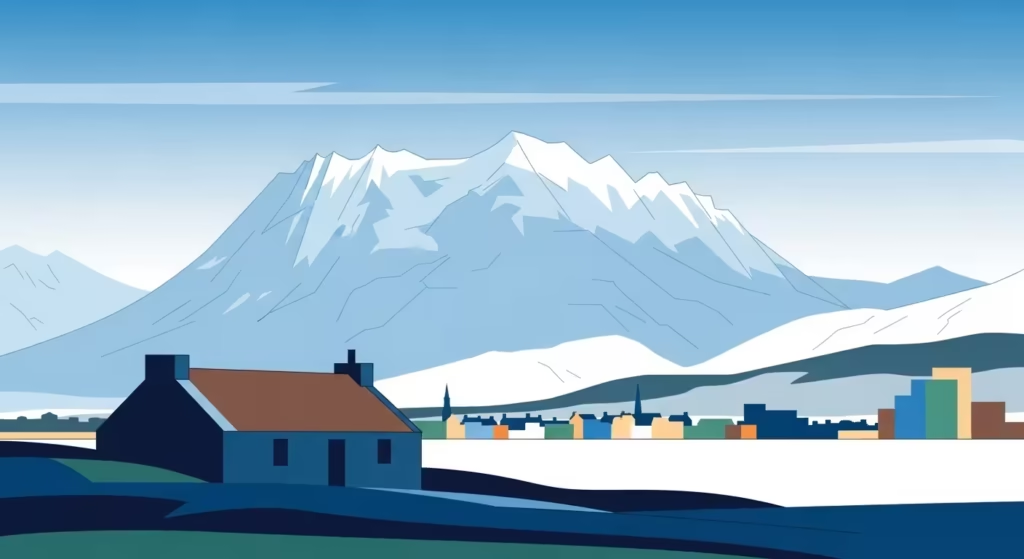
Autumn (September-November) treats visitors to spectacular fall colours and dramatic skies, with the red deer rutting season and migrating birds providing wildlife watching opportunities. Some facilities reduce hours after summer, but photography conditions are excellent.
Winter (December-February) transforms the landscape with snow-covered mountains and frosty glens, with potential Northern Lights sightings possible. Many attractions close during this period, some roads become impassable, and daylight hours are limited.
5 Must-Read Books for Your North Coast 500 Adventure
If you’re seeking hidden gems, cycling routes, or the best places to eat and stay, these five books are your perfect companions. They offer expert insights, practical tips, and inspiration to make your NC500 journey truly unforgettable.
The Rough Guide to North Coast 500
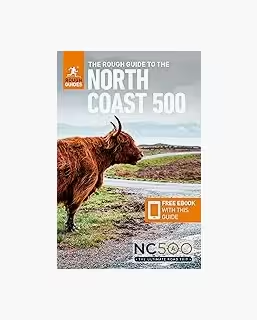
is a comprehensive and up-to-date guide designed for both first-time and experienced road trippers. It features detailed itineraries, insider tips, and more than 100 highlights covering scenery, food, culture, and places to stay. With practical advice on driving distances, road conditions, and planning your route, this guide ensures you never miss the best spots along Scotland’s spectacular NC500.
You can purchase it directly from Amazon UK.
Destination NC500 by Destination Earth Guides
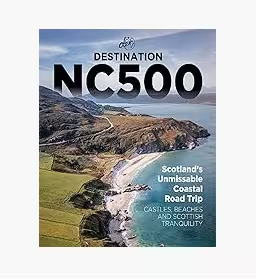
Offers an up-to-date, practical handbook packed with local experiences and scenic detours, perfect for travellers eager to go off the beaten path. It shines a spotlight on hidden gems, independent eateries, and meaningful encounters with Highland life.
This modern and visually rich book is available for purchase at Amazon UK.
Scotland’s North Highlands (Slow Travel Guidebook) by Bradt
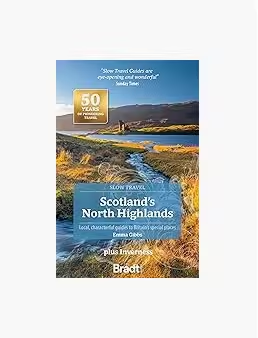
Tailored for those who prefer a slower, more sustainable pace. This guidebook delves deeply into the culture, wildlife, history, and community stories of the Highlands, encouraging readers to explore the lesser-travelled byways and savour authentic Scottish experiences.
To buy it, visit the Bradt Guides official webshop.
Cycling the North Coast 500 by Mike Wells
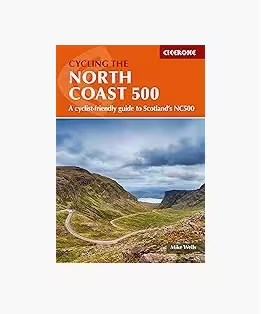
A must-have for cyclists, providing clear maps, elevation charts, accommodation ideas, and daily stage breakdowns. The book is carefully structured for two-wheeled adventurers aiming to conquer the NC500’s rugged and rewarding terrain.
Find it directly at the Cicerone Press online store.
North Coast 500: The Road Trip of a Lifetime by Robbie Roams
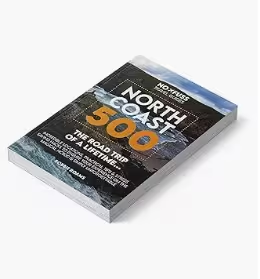
Combines humorous storytelling with practical travel tips, sharing one traveller’s advice on routes, budgeting, recommended stays, and memorable stops. Written in a lively, friendly style, it’s perfect for anyone who wants both inspiration and logistics for a Scottish road trip.
Order your copy through Amazon UK.
The top 10 NC500 Vlogs on Youtube
For one of the most engaging overviews, start with “3 Days Driving Scotland’s Most Epic Road – The North Coast 500” by Through My Lens, which is a nearly hour-long video packing castles, hidden beaches, and practical tips as the vlogger completes the entire loop in just three days. The video is available at YouTube – Through My Lens.
High-energy driving fans will love “Driving Scotland’s Best Roads! | NC500 2025” by Driven+, filled with expert road insights, incredible drone footage, and stops at iconic places like Dunrobin Castle and Applecross Pass.
Watch it at YouTube – Driven+.
For a taste of the route’s most dramatic scenery, Robbie Roams’ “NC500 THIS is the most EXCITING SECTION! You can’t miss this drive” zeroes in on the route’s northern stretch, sharing both hidden gems and essential travel tips.
Catch it here: YouTube – Robbie Roams.
Motorcycling enthusiasts will enjoy “Has the NC500 Had Its Day? Riding Scotland’s Most Famous Route in 2025!” by That Biker Simon, who explores whether the NC500 still stands up to its legendary status in the world of UK adventures.
The full vlog is at YouTube – That Biker Simon.
To follow a full adventure playlist across all the route’s best stops, including Dunrobin Castle, Durness, Ullapool, and Applecross, check out NORTH COAST 500 in SCOTLAND (Full Trip).
For deeply informative and up-to-date travel guides, be sure to search the latest playlists and channel uploads on YouTube for more NC500 content from creators like Robbie Roams and Roz-Ventures, and supplement your planning with tips and stories from the official NC500 blog.
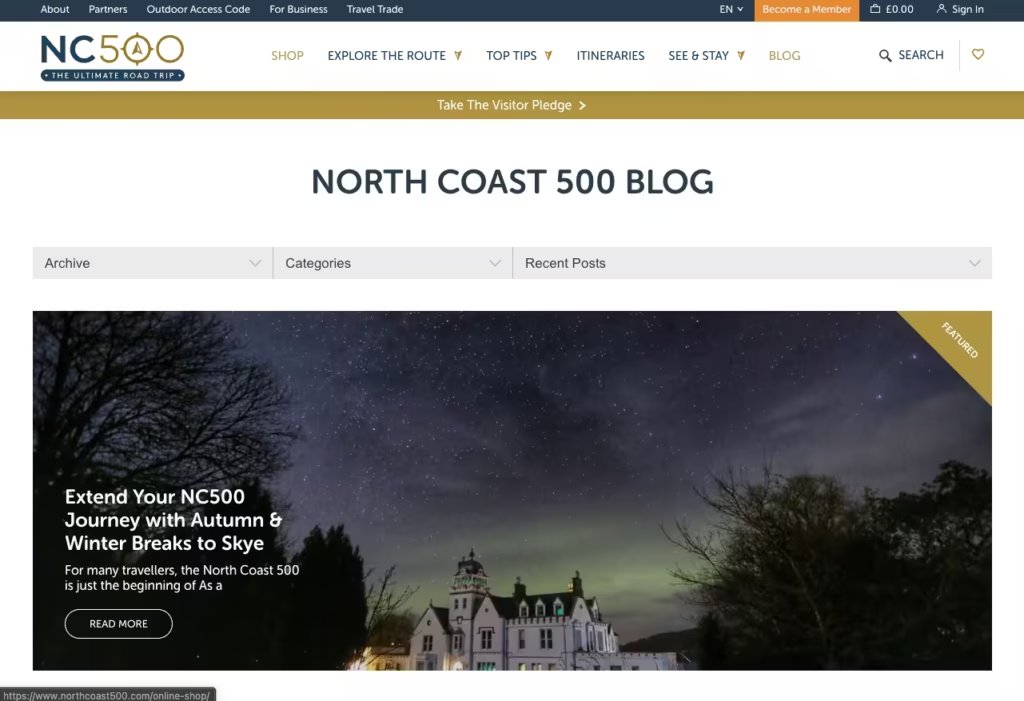
What are the best guides for the NC500?
Travelling the North Coast 500 is an unforgettable adventure, made seamless by choosing the right guide.
The official North Coast 500 planner from VisitScotland provides a expertly mapped itinerary and essential advice for travellers of any experience, ensuring a well-organised and informative journey.
If you want to discover off-the-beaten-path gems, the Discover Assynt NC500 Free Booklet is a local favourite that highlights secret locations and enriching experiences beyond the main route. This PDF booklet encourages travellers to get off the beaten track with some truly lovely hidden gems awaiting in the North Highlands.
It offers great days out and places to explore on the NC500, making it an invaluable resource for planning a more adventurous and unique journey through this stunning part of Scotland.
The booklet’s focus on less frequented spots ensures you can experience the raw beauty and tranquillity of the Highlands away from the usual tourist paths, perfect for those seeking authenticity and solitude on one of the UK’s most iconic road trips.
Visitors beginning their journey in Inverness will find the Inverness Design Studio Ultimate Guide an essential for their trip, as it offers the most comprehensive NC500 guide available on the internet.
This guide starts your adventure right from the vibrant city of Inverness, providing everything you need for a smooth journey—from tips on reputable shops for last-minute supplies to recommended coffee spots to fuel up before heading north.
The guide allows you to tailor the NC500 adventure to your schedule and interests, whether you prefer a leisurely week-long exploration or a condensed three-day circuit full of striking scenery and iconic castles.
Each section of the route unfolds with dramatic landscapes and hidden gems, enriched by insider knowledge that blends local tips with beautiful scenic highlights, making your North Coast 500 experience truly memorable and uniquely Highland.
Current top picks also include the Roam With Ross Interactive NC500 Guide, which features custom itineraries and a Google Map packed with meticulously chosen stops for 2025, as well as Chris & Wren’s World NC500 Guide, which shares a detailed five-day itinerary and timely recommendations to enhance your October adventure.
Our free PDF guide book for the NC500 remains highly recommended, praised for its easy-to-follow maps, budget advice and practical hacks that transform the trip into a stress-free and inspiring experience.
Each guide is a trusted, up-to-date resource, making your journey along the NC500 as spectacular and carefully planned as possible.
What are the 10 best apps to download your trip on the NC500?
For a truly seamless NC500 trip, here are the top ten essential apps with direct download links, making your planning and daily travel much easier:

Park4night
Park4night is indispensable for finding wild camping and overnight stops, complete with a huge community-sourced database and detailed user reviews. Download it for iOS or Android.
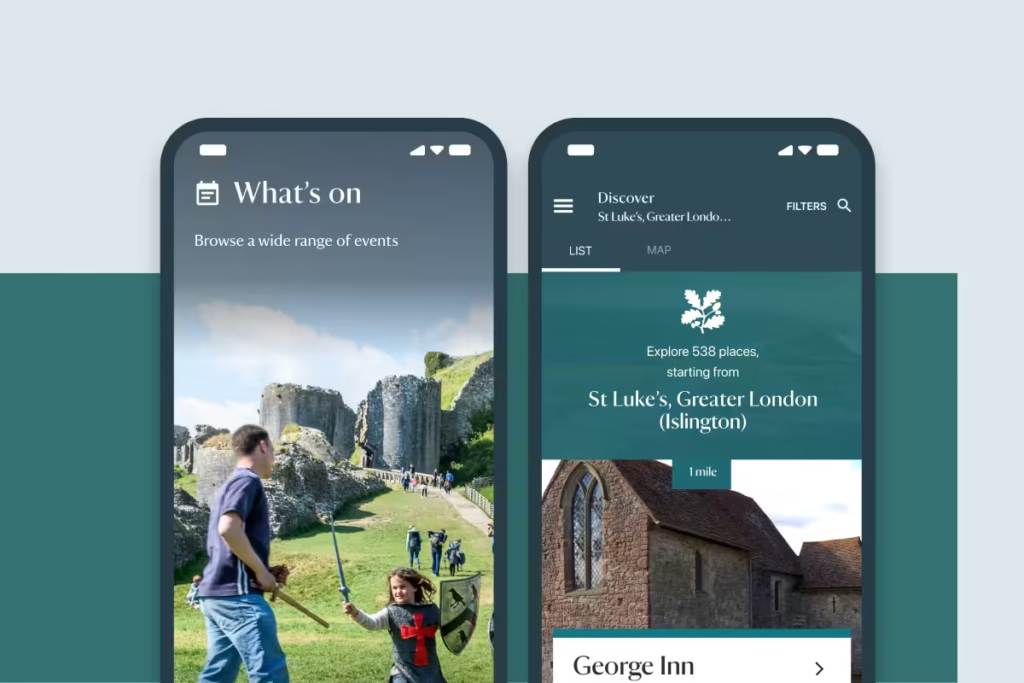
The National Trust App
The National Trust App is a fantastic companion for exploring Highland heritage along your NC500 route, boasting detailed listings on more than 500 places with opening times, special events, and downloadable maps for reliable offline access. You can download it on Android or iOS, and use the app to search for events and plan visits even when travelling through the remote Highlands.
Please note that National Trust places in Scotland are managed separately by The National Trust for Scotland, so you might want to pair the app with the Trust’s own locator map for Scottish attractions.
Both resources offer excellent inspiration for meaningful days out packed with heritage, nature, and unique Scottish history.

The Local Guide NC500
The Local Guide NC500 is an essential app for anyone exploring the iconic North Coast 500 route in Scotland, available for both iOS and Android. It uses offline-enabled GPS maps and curated driving routes, automatically unlocking local stories, music, and historical insights as you travel, so you never miss a hidden gem or point of interest—even with patchy mobile signal.
The app features themed audio tours, interactive content, and turn-by-turn directions, helping tailor your trip to scenic views, castles, beaches, and Highland culture.
Its detailed review system lets you find must-see locations and genuine traveller favourites, while powerful map filters make it easy to discover anything from natural wonders to the nearest car park or local eatery.
The app’s robust offline capability means you can download guides in advance, ensuring seamless navigation and rich storytelling along rugged Highland roads.
For further information and tips from those who contributed to the project, see elevated feedback in guides like Locatify’s case study and comprehensive trip reports from users on the App Store and Google Play.
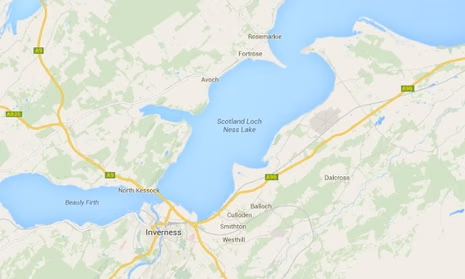
Google Maps
Google Maps is indispensable for navigating the NC500, offering turn-by-turn driving directions, live traffic data, detailed business information, and extensive user reviews. Before setting off, you can download offline maps for the entire route or specific areas—ensuring you remain on track even in the Highlands’ remote sections with spotty signal.
This offline capability means you still have access to GPS-based driving directions, basic destination details, and saved places, all with no data connection required.
To maximise the app’s benefits, simply open Google Maps, tap your profile picture, select ‘Offline maps,’ choose your area, and download ahead of time. Remember, while offline, you’ll get reliable driving directions, but live traffic and public transport options won’t be available—so always plan key detours and stops in advance.
With features such as saved custom lists and Street View previews, Google Maps ensures your NC500 adventure is both seamless and informed, making it the essential digital map for every stage of your Scottish road trip.
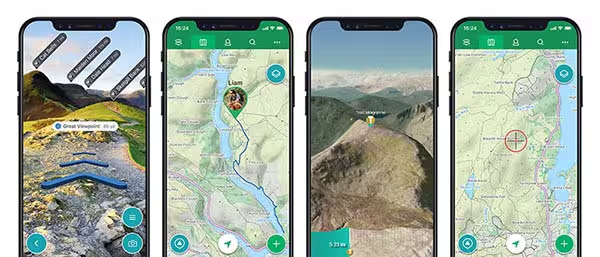
Viewranger
ViewRanger was long favoured by hikers and cyclists for its GPS tracking, offline map downloads, and rich route database, especially in remote areas like the NC500.
The app allowed users to plan journeys, record tracks, follow official trails, and overlay routes even when out of phone or data range—ideal for the unpredictable Highland weather and landscape. Available for iOS, it offered seamless OS mapping, real-time navigation, and AR landscape features for identifying mountain summits and landmarks.
As of 2022, ViewRanger has now merged with Outdooractive, expanding the app’s core features to a wider outdoors community and combining official OS, IGN, and international mapping tools under the Outdoor-active umbrella. Previous ViewRanger users can transfer their data and tracks with no loss of functionality.
For those looking for alternatives, apps such as OS Maps, Locus Map, and Organic Maps all provide robust offline navigation and mapping, perfect for planning NC500 walks and bike rides.
For live Scottish trail guides, plotting walks, and getting the most up-to-date info, pairing an app such as Outdooractive or OS Maps with route inspiration from WalkHighlands will ensure a safe and memorable NC500 adventure.
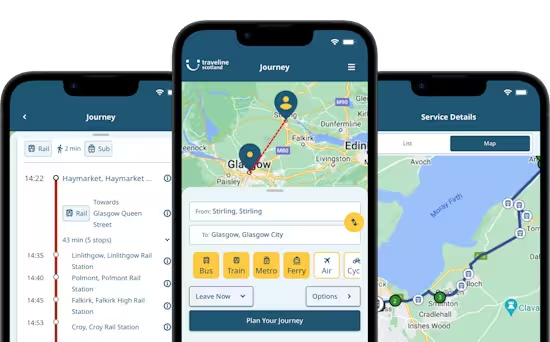
Traveline Scotland
Traveline Scotland is an award-winning, free app offering live journey planning and public transport information for buses, coaches, trains, Glasgow Subway, trams, and ferries across Scotland. Accessible via iOS and Android, the app features national route planners, live departure boards for every stop, disruption updates, downloadable timetables, fares info, and public cycle hire locations.
As of 2025, the revamped interface includes step-free route details, real-time vehicle tracking, improved accessibility support, travel alerts, and direct integration with Scotland’s latest carbon-friendly public transport schemes.
This makes it invaluable for NC500 travellers seeking up-to-date public transport schedules or looking to reduce their environmental footprint.
Traveline Scotland is designed to run in low-signal areas and is continually updated with user-driven improvements to make trip planning simple and reliable throughout your Highland journey.

The MET Office App
The Met Office app is trusted for daily Scottish weather, providing award-winning forecasts, real-time weather warnings, and interactive rainfall maps to keep NC500 travellers ahead of ever-changing conditions.
With convenience for both iOS and Android, the app covers everything from hourly forecasts to ‘feels like’ temperatures, wind gusts, UV indices, and even air pollution updates—ideal for planning walks, camping, and scenic photography.
You’ll also receive instant alerts about severe weather risks for saved locations, with detailed features designed for the UK’s unpredictable rain, wind, and sunshine.
The latest interface update brings a modern look, easier forecasts at a glance, and improved accessibility for offline use in remote Highland areas. Recognised for accuracy and reliability, the Met Office app is an unrivalled resource for anyone making the most of Scotland’s outdoors.
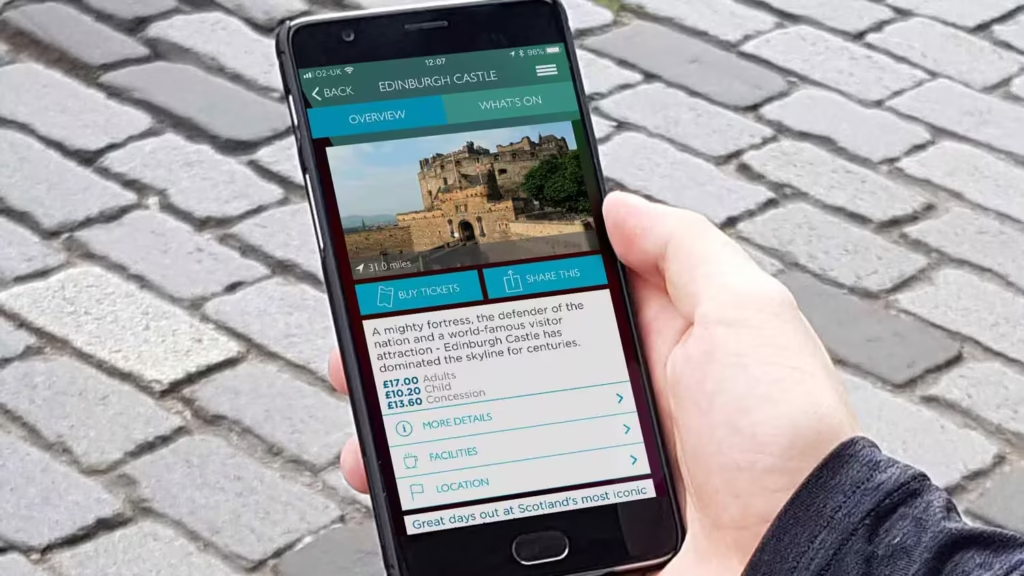
The Historic Scotland Visitor App
The Historic Scotland Visitor App is your ultimate digital companion for discovering Scotland’s rich heritage sites along the NC500 and beyond. It’s available on both Android and iOS. The app lets you search more than 300 sites by region or category—such as ‘families’, ‘gardens’, or ‘military history’—and view all attractions on an intuitive, interactive map.
You’ll have instant access to up-to-date practical info on opening hours, facilities, admission prices, and travel details, making route-planning simple.
New features in 2025 include a “Medal Hunter” badge collection, digital membership card integration, and the “What’s Near Me?” tool to find attractions and events within a 50km radius. The app also provides inspiration for your trip through itineraries, event listings, seasonal highlights, and curated suggestions.
With galleries, regional filters, and the ability to create shareable historic itineraries, the Historic Scotland Visitor App helps transform a Highland journey into a truly enriching experience for every culture and history lover.
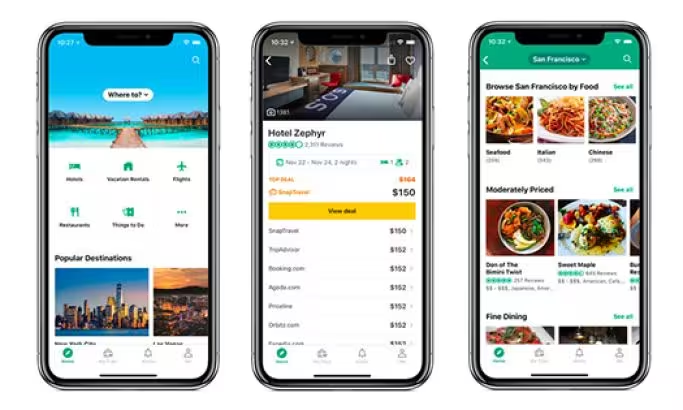
Trip Advisor
TripAdvisor is a must-have app for NC500 travellers, delivering up-to-date reviews, photos, and practical guidance on places to stay, eat, and visit across Scotland. Accessible via Android and iOS, the app helps you plan every stage of your journey, create custom itineraries with AI-powered recommendations, and collaborate with travel companions in real time.
Key features include more than a billion verified traveller reviews, interactive maps to locate nearby attractions instantly, and the ability to book hotels, tours, and restaurant reservations directly from your phone.
You can filter for the best-rated locations on the NC500, get timely updates on seasonal events, and share or receive travel tips from fellow explorers—all in one place.
With its constantly refreshed listings and powerful AI summaries, TripAdvisor is essential for discovering new gems and making confident choices as you explore the Scottish Highlands.
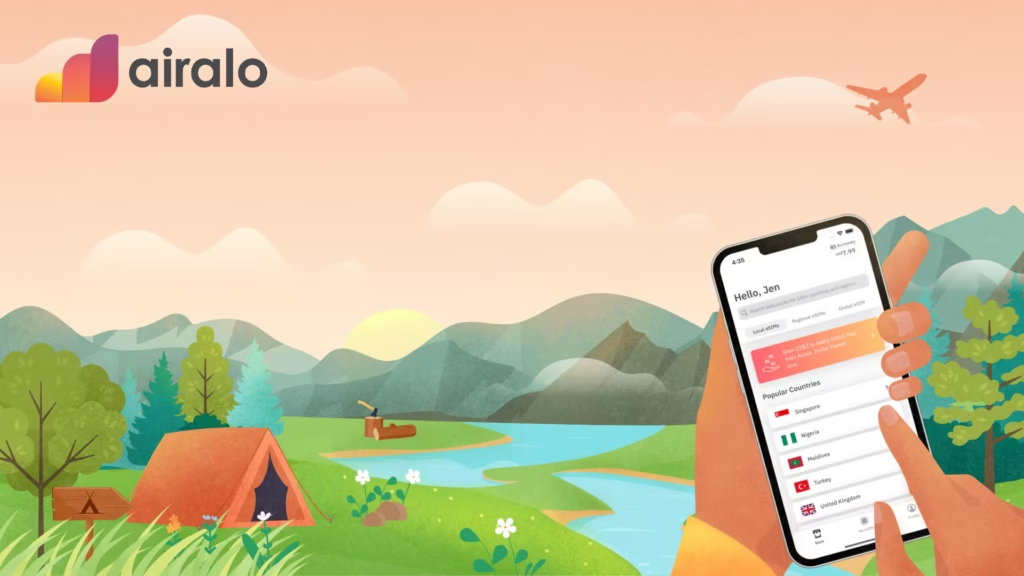
Airaflo
For seamless mobile data connectivity throughout your NC500 adventure, Airalo offers a wide range of eSIM plans with reliable coverage across the UK, including Scotland.
Their local UK eSIM packages feature flexible data options, from affordable short-term plans like 1GB for 7 days to larger bundles with up to 20GB valid for 30 days, supported by major UK networks such as O2 and Three.
The eSIMs can be easily installed via Airalo’s app, enabling instant activation without the need for physical SIM cards, ideal for travellers seeking hassle-free connectivity without roaming fees.
Airalo’s plans also include regional options like the Eurolink plan, covering multiple European countries including the UK, making it perfect for extended trips across borders.
With 24/7 customer support, in-app top-ups, and compatibility with a wide range of smartphones and devices, Airalo is a top choice for staying connected while exploring remote Highlands landscapes on the NC500.
For device compatibility and activation tips, visit their help section or customer service channels available through chat and WhatsApp.
What are the best resources or tools for the NC500?
When planning your NC500 adventure, the NC500 Journey Planner is the one resource you absolutely shouldn’t travel without. It was made by developers who are passionate about the NC500 and it shows. The tool covers everything and it’s all completely free to use.
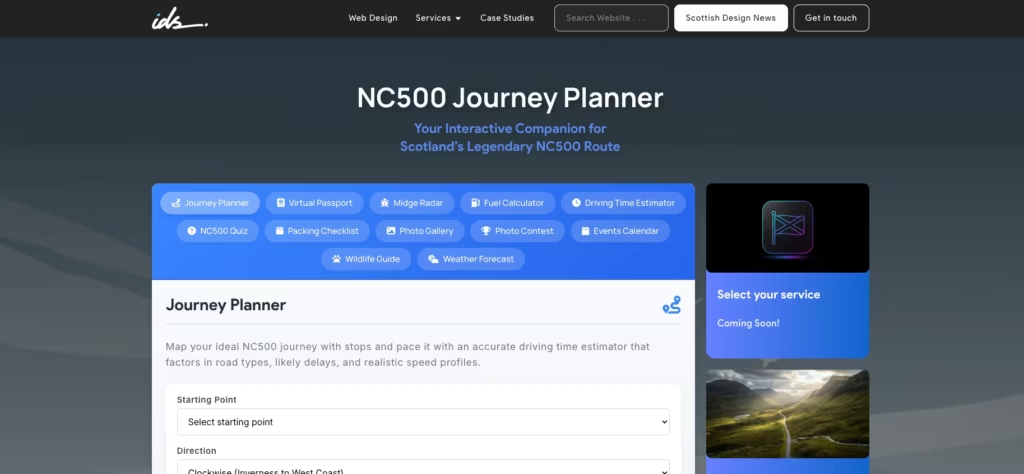
It brings together every essential tool — route mapping, driving time estimates, fuel-cost calculators, weather & midge forecasts, packing checklists, and even a “digital passport” to track your stops — all in one free, user-friendly interface.
No more juggling half a dozen apps or spreadsheets: the NC500 Journey Planner gives you clarity, confidence, and also the convenience to focus on the road ahead (and those epic Highland views), not logistics!
Click here to try the NC500 Journey Planner.
Making the NC500 Accessible: A Guide for Travellers with Disabilities
Scotland’s North Coast 500, renowned as one of the world’s most scenic road trips, is embracing accessibility to ensure travellers with disabilities can enjoy this breathtaking journey. Inverness, the official start and end point of the NC500, boasts numerous accessible attractions such as historical forts, botanical gardens, and nature reserves that provide inclusive experiences.
Transport options accommodate a range of needs, with Inverness Airport offering tailored support and Scotland’s rail services featuring accessible carriages and services on routes serving the Highlands. Local buses prioritize wheelchair access, making key points along the route reachable for all.
While the rugged terrain of the Highlands presents unique challenges, several specialised providers such as Allied Mobility offer adapted vehicle hire to enable flexible travel.
Additionally, accessible guided tours give visitors a chance to explore with expert assistance, ensuring no one misses the natural wonders or cultural heritage along the NC500.
Planning is key: accommodations with accessible facilities, reviewed on platforms like Euan’s Guide, and advance bookings at popular destinations help create a smooth, enjoyable experience.
Embracing inclusive travel principles not only opens the NC500’s historic landscapes to diverse audiences but enriches everyone’s journey with respect, care, and shared adventure.
Driving the NC500 in Style: Hiring Supercars for the Ultimate Highland Experience
For those seeking to elevate their North Coast 500 adventure, hiring a supercar offers a thrilling way to explore Scotland’s majestic Highlands in unmatched style and power.
Several luxury car rental companies in Inverness and nearby cities provide an impressive fleet of high-performance vehicles, from Ferrari and Lamborghini to Porsche and Aston Martin, perfect for conquering the winding coastal roads and open stretches of the iconic NC500 route.
Driving a supercar not only adds exhilaration but also turns heads as you glide past dramatic cliffs and scenic lochs, making the journey as memorable as the destinations.
When planning a supercar hire for the NC500, it’s crucial to consider practical aspects such as insurance coverage, driver experience requirements, and vehicle suitability for rural roads.
Many rental services include detailed route advice and concierge support to help tailor the experience while ensuring safety on often narrow and unpredictable Highland roads.
Additionally, booking in advance through trusted providers like Evo Car Hire or Sunderland Prestige secures the best vehicles and competitive rates.
Whether you’re celebrating a special occasion or simply indulging your passion for high-octane driving, a supercar on the NC500 delivers a unique blend of luxury, speed, and breathtaking Scottish scenery that’s hard to beat.
Best Party Spots on the NC500: Where to Find the Highlands’ Hippest Nightlife
If you’re seeking nightlife and party energy as you road trip Scotland’s NC500, Inverness is the first and last stop for vibrant bars and live music. Hip favourites like Hootananny, known for its legendary folk gigs and packed dancefloor, and The Malt Room, with its artisan whisky cocktails, are perennial draws for locals and coolhunters alike.
Upstairs at Mad Hatters hosts intimate indie gigs, while Botanic House delivers DJ sets and dance nights along with a stylish city vibe.
Further north, party vibes await at pubs like The Castle Tavern in Inverness and The Ship Inn in Invergordon, where you can mingle with a lively local crowd.
If you reach John o’ Groats, look for pop-up brewery events and coastal festivals that draw in-road trippers and creatives for live music, craft drinks, and spontaneous highland fun.
While the Highlands might be known for dramatic landscapes, there’s a youthful spirit and a friendly party culture ready to welcome you at every bend of the NC500.
Top Social Networking Groups to Follow for NC500 Enthusiasts
For those planning to explore the North Coast 500 or simply wanting to stay connected with the vibrant community of travellers and locals, following the right social networking groups can enrich your experience with insider tips, real-time updates, and shared stories.
Groups like the North Coast 500 Facebook Community offer a forum where travellers swap advice on the best routes, hidden gems, and current road conditions.
The group is active, welcoming, and a treasure trove of practical information for both first-timers and seasoned road-trippers.
On Instagram, hashtags such as #NC500 and #NorthCoast500 curate inspiring travel photos, event announcements, and festival highlights, connecting you with a community passionate about Scotland’s rugged beauty.
Joining the VisitScotland social channels also keeps you up to date on official news, accessibility tips, and local events tied to the NC500 region.
For those who prefer dynamic travel planning, apps like the “Local Guide NC500” combine GPS mapping with social features, allowing users to engage with fellow explorers, share experiences, and access tailored content.
Embracing these social groups ensures you’re always in the know and ready to make the most of your Highland adventure.
What are the 10 best walks on the NC500?
The North Coast 500 showcases some of the UK’s best scenery, and walking is the perfect way to slow down and immerse yourself in the Highlands. Your journey will be filled with unforgettable views, tumbling waterfalls, dramatic mountain passes, and encounters with Scotland’s wildlife.
For a comprehensive resource on these routes, visit the detailed Walk Highlands website for up-to-date descriptions and maps. Here are the top ten walks recommended along the NC500, spanning gentle strolls and challenging hikes:
Start with the beautiful 2km loop at Rogie Falls, ideal for viewing spectacular waterfalls and, in season, leaping salmon. Hikers seeking even more impressive cascades can venture to Falls of Kirkaig for a 7km out-and-back trail framed by mountain vistas. Quinag offers a 15.5km hike with three dramatic Corbetts, delivering one of the route’s best panoramas.
At Caithness’s edge, Duncansby Head gives an easy 3km coastal stroll to towering sea stacks with views out to Orkney.
To savour rugged peninsulas and wildlife, take the 5.6km Shieldaig Peninsula walk, and for the only waymarked mountain walk in Britain, challenge yourself on the Beinn Eighe Mountain Trail.
Passionate mountaineers can conquer Liathach, a tough 11.5km circuit with quartzite peaks, or ascend Beinn Damh, renowned for its pine forests and vistas.
The circular Loch Coulin and Loch Clair route is a mostly level trail blessed with unforgettable loch and mountain backdrops.
Last but not least, climbing Ben Wyvis—with its vast grassy plateau and panoramic outlook—makes a fitting finale to any NC500 hiking adventure.
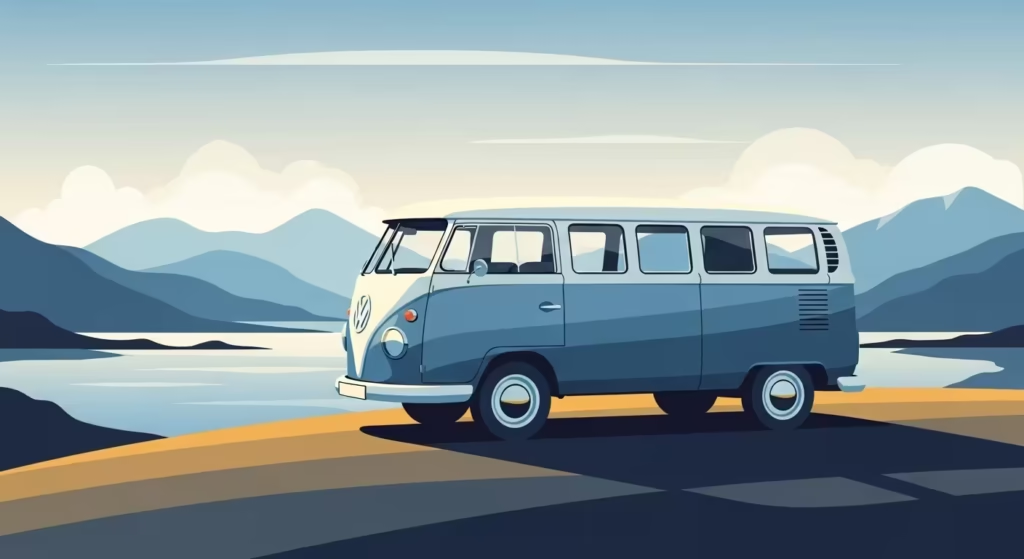
Where Are the Best NC500 Photography Spots?
The North Coast 500 is renowned for its breathtaking photo opportunities, rewarding travellers who time their visits for the best light. Eilean Donan Castle stands as one of Scotland’s most iconic landmarks, best snapped at sunrise for magical colours and quiet serenity.
Near John o’ Groats, the Duncansby Stacks create a dramatic scene in the late afternoon, with angled sunlight and deep shadows bringing out their rugged splendour.
From the Bealach na Bà summit, photographers capture emotive panoramas and fiery sunsets sweeping over the Applecross Peninsula and out to the Hebrides.
Achmelvich Beach transforms into a pastel-hued wonderland at twilight, particularly suited to long exposure shots where soft sands and azure waters blend together.
For those wanting to capture Britain’s northernmost vistas, Dunnet Head radiates during golden hour, often with wild seabirds circling the lighthouse.
Other must-see locations include Smoo Cave—with light streaming through the cavern for extraordinary images—and Mellon Udrigle Bay, home to dazzling white sands and mountain views that change with the seasons.
For a comprehensive visual guide and even more location suggestions, explore resources from the Finding the Universe NC500 Photography Guide and a curated list of top photo spots discovered by experienced landscape photographers.
Finding Cheap Flights to Inverness: Your Gateway to the NC500 Adventure
Booking affordable flights to Inverness is a smart first step for anyone planning to embark on the iconic North Coast 500 road trip.
Inverness Airport, the primary gateway to Scotland’s Highlands, is well connected with regular flights from major UK hubs such as London Heathrow, Gatwick, and Manchester, as well as seasonal international flights from European cities.
To secure the best deals, travellers should consider flexible travel dates and use price comparison tools like Skyscanner or Google Flights, which track fare fluctuations and alert you to discounts and flash sales. Early booking and mid-week departures can also significantly reduce airfare costs.
Once in Inverness, rental car services await to help you start the NC500 journey in style and ease. Many airlines and travel platforms offer package deals that combine flights with car hire, simplifying your trip planning and often yielding additional savings.
Keep an eye on travel blogs and official sites like VisitScotland for timely updates on route and airport changes, ensuring a smooth arrival as you prepare to explore Scotland’s breathtaking northern coastline.
With careful planning, affordable and convenient flights to Inverness make the start of your NC500 adventure accessible and stress-free.
The Fastest Way to Drive the NC500: Essential Tips for a Swift Highland Journey
If you’re pressed for time but want to experience the beauty of Scotland’s North Coast 500 (NC500), planning a fast yet memorable drive is key. The NC500 spans around 516 miles and is typically enjoyed over 5-7 days, but can be tackled in 2-3 days by prioritising main roads and minimising stops.
Driving anti-clockwise from Inverness is widely recommended, starting on the less dramatic east coast and saving the stunning, yet more challenging west coast for last when roads tend to be quieter (NorthCoast500 Official Guide).
To optimise your time, it’s best to focus on smoother main roads like the A9 and A835 and use routes such as the B9176 to bypass busy stretches. Avoiding popular detours like John o’ Groats also cuts driving time (Gentleman’s Journal Guide, Nordic Visitor NC500 Guide).
Making accommodation and fuel stops in advance is vital to prevent delays, especially along the remote stretches of the Highlands (Audley Travel Route Tips, Dream Big Travel Itinerary).
Always drive cautiously on single-track roads common to this route, and use GPS navigation alongside real-time traffic updates for the safest and quickest journey (Magnitude Finance Driver Guide).
These resources will help you craft a swift yet rewarding NC500 adventure, balancing speed with the opportunity to savour Scotland’s majestic landscapes and culture.
Can You Tour the NC500 Without a Car?
It is technically possible to do the North Coast 500 (NC500) using public transport, but it is challenging and requires careful planning. Major towns on the route, such as Inverness, Wick, and Thurso, are accessible by train and bus, but many stretches between remote coastal villages have limited or infrequent connections, especially around the northwest corner of the route.
Public Transport Options
Regular trains run along the scenic Far North Line from Inverness up the east coast to Wick and Thurso, with an average journey time of four to four and a half hours and direct connections available several times a day.
Communities along the route—like Dunrobin Castle, Dingwall, and Invergordon—are easily reached by train, but timetables remain limited, so always check ScotRail schedules before travel.
Bus links operate on main roads through larger towns and villages, with providers and stops listed on Traveline Scotland and routes such as the 803 Durness–Thurso service, which typically runs just once per week – https://www.lonelyplanet.com/articles/north-coast-500-road-trip-guide.
For remote stretches like Thurso to Durness, options are especially sparse.
In the most isolated segments, including Scourie to Inchnadamph, public transport is nonexistent, so pre-arrange a local taxi or seek a lift. Comprehensive planning and regularly updated schedules are essential, particularly if depending on public transport for your Highland adventure.
Route Planning Tips
- Begin in Inverness, using trains and buses to cover as much of the route as possible.
- Expect gaps, particularly in Sutherland and the northernmost areas, where walking, cycling, or arranging a taxi might be necessary for short legs.
- Some visitors do a hybrid approach: public transport for the main sections, and car or campervan hire for the less accessible stretches, supporting rural services and communities.
Alternatives and Accessibility
While traditional public transport remains patchy along the NC500, alternative options such as guided cycling tours and flexible coach tours bring the region within reach for those without a car.
Several companies run multi-day NC500 cycle holidays covering the iconic 500-mile loop, catering to keen riders with support vans, expert guides, and modified routes to maximise scenery while avoiding busier roads.
Tours can be tailored in difficulty and duration, so whether you prefer endurance challenges or a more leisurely adventure, cycling unlocks the Highlands’ drama and tranquillity at your pace.
For those seeking comfort and insight, a variety of guided coach tours and custom minibus services operate along the route, often incorporating stops at historic castles, distilleries, and wildlife hotspots. These tours are led by local experts, providing insightful commentary and hands-free access to the most celebrated sections of the route.
Although not technically public transport, both options allow for greater flexibility and accessibility, ensuring everyone can experience the unforgettable landscapes of northern Scotland.

What are the Best Wildcamping Spots on the NC500?
Wild camping along the North Coast 500 unlocks the raw beauty of the Highlands, where every pitch offers adventure alongside epic scenery. Camp beneath the dramatic profile of Duncansby Lighthouse near John O’Groats for sweeping views of the North Sea, and set off at sunrise to wander out to the Duncansby Stacks; if access is restricted, consider well-rated pitches south at Keiss.
Ceannabeinne Beach near Durness is a local gem for peaceful tenting close to ancient ruins and wild dunes; always arrive sensitively and leave early for a true back-to-nature feel.
One of Scotland’s greatest wild spots, Sandwood Bay, is a walker’s prize, famed for its remote sands and Am Buachaille sea stack. Loch Glascarnoch offers tranquil lochside camping at the heart of the Highlands, while just north of Poolewe, elevated pitches provide serene sea views—arrive early for the best spot.
Strathy Point Lighthouse near Thurso allows campers to gaze over the Atlantic Ocean and spot marine life, and Applecross Bay invites you to wake by the shore, just a stroll from village amenities.
Camping beside haunting Ardvreck Castle at Loch Assynt rewards you with moody lochside vistas, especially beautiful in the morning mist. For full remoteness, the Garve area on the Black Water River and Fannichs moorlands get you properly off-grid near An Teallach.
Finally, the vast dunes and golden sands of Dornoch Beach deliver classic wild camping, ideal for both sunrises and long, empty evenings.
Practical Tips & Responsible Wild Camping
Wild camping is widely permitted across Scotland, provided you follow the Scottish Outdoor Access Code, which emphasises respect for nature, local communities, and responsible behaviour.
Always practise leave-no-trace principles: camp in small numbers, stay away from cottages, farmland, and historic sites, and move on after two or three nights at any one place.
Choose locations that are well away from buildings and avoid enclosed fields with crops or grazing animals.
Wild camping should be lightweight and discreet, with fires kept small and safely managed—or even better, use a stove instead of an open fire and always clear away all traces before you leave.
The right of responsible access does not extend to motorised vehicles, so avoid parking or driving campervans on sensitive land. In some busy areas—such as parts of Loch Lomond & The Trossachs National Park—specific byelaws and camping permits are in place during peak months, so check locally if in doubt.
For up-to-date guidelines and full details, consult the Scottish Outdoor Access Code and VisitScotland’s wild camping guide.
Reference Map and Further Planning
For detailed maps and further planning resources to navigate the North Coast 500, consider the highly-rated NC500 Road Trip Map from Highlands2Hammocks.
This large, portable map includes locations for over 110 sights and attractions, as well as water and waste points, eateries, and accommodation. Each purchase comes with a free digital version, making it easy to view directions and key stops on your phone or tablet while travelling.
If you prefer a package, the NC500 Map & Book Bundle pairs the Destination NC500 guidebook and detailed A1 map, supplying in-depth knowledge and simple planning tools in one set.
For unique itineraries and off-grid inspiration, Off Grid Odyssey offers guides and camping spot recommendations sourced from real van travellers, helping you discover the quietest corners of the route.
Combining these resources ensures your NC500 journey is well-informed, flexible, and packed with unmissable experiences.
Animal Well-being on the NC500
For travellers embarking on the North Coast 500, respecting and protecting the region’s wildlife is a vital part of responsible tourism. Scotland’s stunning Highlands are home to an incredible range of native species, and ensuring their safety and wellbeing requires awareness and care from every visitor.
To help you navigate animal welfare considerations and embrace sustainable travel, here are some trusted resources offering expert guidance and practical advice:
- Scottish Natural Heritage – NatureScot: A comprehensive source for information on wildlife protection and environmental best practices throughout Scotland’s natural landscapes.
- VisitScotland Responsible Tourism Section – VisitScotland Responsible Tourism: Practical tips and initiatives encouraging visitors and businesses to minimise environmental impact and promote conservation.
- World Animal Protection Scotland – World Animal Protection: Campaigns for animal welfare in tourism and educates travellers on avoiding harmful wildlife experiences.
- Scottish SPCA – Scottish Society for the Prevention of Cruelty to Animals: Advocacy and resources for the ethical treatment of animals, supporting local efforts to safeguard wildlife.
- Forestry and Land Scotland – Forestry and Land Scotland: Manages many natural areas along the NC500, offering visitor information with a focus on conservation and wildlife protection.
- Responsible Travel – ResponsibleTravel.com Scotland Guide: Features ethical travel options, wildlife-focused tours, and sustainable tourism advice tailored to Scotland.
By consulting these organisations and following their guidelines, you help preserve the wild beauty and rich biodiversity of the NC500, ensuring future visitors experience the Highlands’ wildlife in their natural, undisturbed habitats.
Prettiest Fishing Villages on the North Coast 500: Coastal Charm and Scenic Beauty
Looking to explore some of the most beautiful fishing villages along the NC500? You can’t go wrong with places like Portmahomack, tucked away on the Tarbat Peninsula. It’s got this lovely sandy bay and a rich history, thanks in part to its harbour designed by Thomas Telford—you can get a little taste of that heritage on the Portmahomack Wikipedia page.
Then, there’s Ullapool, which many folks say is one of the most charming fishing ports along the route. Sitting on the edge of Loch Broom, Ullapool’s harbour buzzes with activity, and it’s a perfect jump-off point for wildlife tours to the nearby Summer Isles. If you want to learn more about this vibrant town, the Ullapool Wikipedia page is a great read.
Up north, you’ll find Scourie—quieter and steeped in Highland history. Its harbour is picturesque, and it’s close to the island of Handa, known for being a nature reserve with impressively large seabird populations. You can check out Scourie’s Wikipedia entry to get the full scoop.
Not forgetting Gairloch, a scenic village nestled by beautiful beaches and mountain views. Alongside the typical fishing village charm, it’s home to some local distilleries and lovely harbourside walks. For the details, have a look at Gairloch’s Wikipedia page.
These villages are fantastic not just for their fishing heritage but also for the authentic Highland coastal experience they offer. Perfect spots to take a break, enjoy fresh seafood, and soak in some truly spectacular scenery.
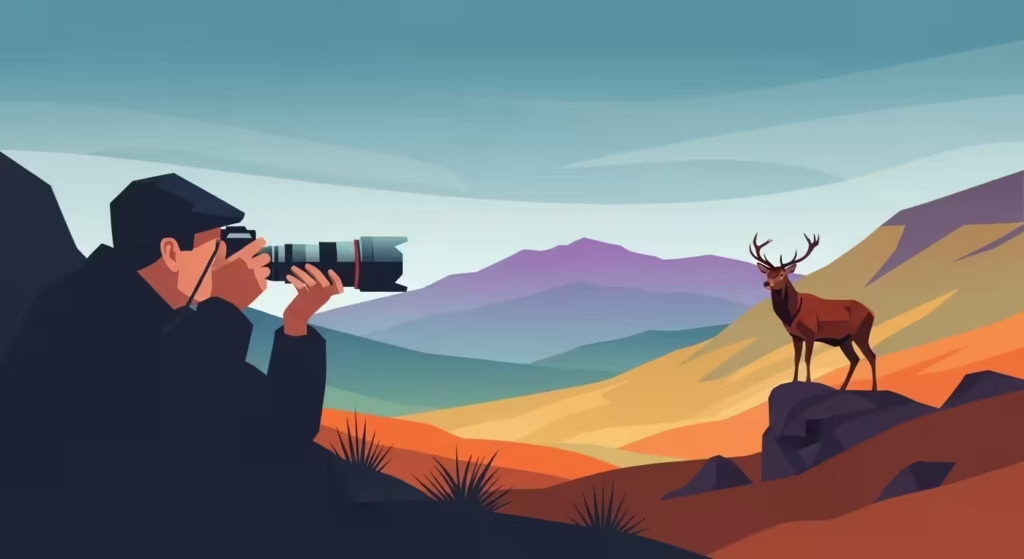
Where can I develop my photos on the NC500?
Travelling the North Coast 500 is an unparalleled opportunity for photographers, whether seeking print services or creative workshops. In Inverness, the highly regarded Highland Print Studio offers bespoke photographic printing and fine-tuning of images for large format gallery-quality results, and specialises in handling all aspects of photo development and presentation.
For those passing through Thurso, Sutherland’s Photo Lab is widely recommended for restoration and rapid photo print needs, while Max Spielmann has kiosks in Ullapool and Inverness for on-the-go prints and souvenirs (The manager Alan has literally won awards for the store’s customer service).
Canvas prints and framing are available via Highland Print Studio and popular online websites like Photo4Me and InFromTheWild for turning memories into art.
For those wanting to elevate their craft, renowned landscape photographer Karen Thorburn offers private workshops and tuition along the NC500, with sessions covering composition, camera technique, and creative skills in the Black Isle and Ross-shire.
Local galleries and studios, such as Highland Print Studio, display a broad range of Highland artists and photographers for inspiration, viewing, and purchasing work.
An immersive option is the Light and Land Photography Tour, joining fellow enthusiasts and expert tuition in discovering hidden photographic gems. For planning the very best photo stops, the NC500 Photo Guide and Finding The Universe’s Photography Locations provide indepth directions, map links, and insider advice for scenic shooting throughout the route.
How can travellers best balance detailed planning with spontaneous exploration during the NC500 trip?
Travellers can best balance detailed planning with spontaneous exploration during the NC500 trip by establishing a solid foundational framework—primarily focusing on time and accommodation—while leaving significant space and preparation for flexible, spur-of-the-moment detours.
1. Establish a Foundational Plan (Detailed Planning)
While the NC500 should not be rushed, travellers definitely should not go without a rough plan. A step-by-step structure can make the adventure smoother.
• Allocate Sufficient Time: The main NC500 route, covering 516 miles, could be completed in at least six days, including stops at the most famous places. However, anything less may feel rushed. It is highly recommended to plan for a minimum of 7 days, or ideally more, to properly experience the route and avoid rushing. A trip length closer to 10 days or even 2–3 weeks is suggested for hiking enthusiasts who want to conquer challenging trails and visit numerous attractions.
• Secure Logistics Early: To prevent the anxiety of searching for places late in the day, especially during peak season (June-August), book accommodation well in advance (at least 3–6 months ahead is recommended for campsites). This includes hotels, B&Bs, and campsites. It is also important to note that many attractions and activities may require pre-booking.
• Prepare for Navigation Challenges: Mobile phone signal is patchy along the route, particularly in remote areas. Detailed planning should involve using navigational aids that work reliably:
◦ Offline Maps: Download maps for offline use, such as offline maps for Scotland on Google Maps, and save digital itinerary pages as PDFs.
◦ Physical Maps/Guides: Carry paper maps, which serve as a backup plan. Guidebooks, such as the official “North Coast 500: Britain’s ultimate road trip official guide,” showcase the best places to stop and provide a simple route map.
◦ Digital Tools: The Official NC500 app features detailed maps and seamless offline functionality, perfect for areas with poor connectivity.
2. Incorporate Flexibility (Spontaneous Exploration)
The NC500 is fundamentally a road trip, and its beauty lies in the ability to take little detours and stop to explore places you might otherwise miss.
• Build a Flexible Itinerary: Instead of planning every second, create a general route and know what major spots you want to see. Experts note that adverse weather conditions might chaotically throw together a fixed itinerary, so it is best to make a loose plan and be prepared to be flexible.
• Venture Off the Main Route: To truly discover hidden gems and immerse yourself in the region’s beauty, travellers should be prepared to wander a bit from the main NC500 route. Examples of worthwhile detours that support exploration include:
◦ Taking single-track roads through remote areas like the Inverpolly Nature Reserve via Inverkirkaig.
◦ Exploring charming seaside towns such as Cromarty.
◦ Heading off-road to secluded beaches like Mellon Udrigle.
◦ Exploring the remote Assynt region, considered by some to have the most wild and breathtaking scenery.
• Use Digital Tools for On-the-Go Exploration: Even with pre-planning, mobile applications can facilitate spontaneous stops:
◦ The Official NC500 app allows you to see “what’s near your current location,” giving you the confidence to explore, and features map filters to quickly find a scenic view, natural wonder, or historic building.
◦ The Park4Night app is useful for self-sufficient campervan travellers to find hidden parking places for spontaneous overnight stops, although popular spots may fill up by late afternoon.
One traveller used this app to make a spontaneous decision to stay overnight at the Bealach Na Ba Viewpoint, which led to an “unexpected adventure”.
• Focus on Local Experiences and Detours: Spend time on walks, activities, and local experiences.
The Western parts of the route (Wester Ross and Sutherland) are particularly rich in mountains and challenging trails, offering spontaneous hiking opportunities, but often require significant time investment (e.g., climbing Beinn Alligin may take 5–6 hours, requiring a full day).
Many short walks to places like Ardvreck Castle or the Falls of Measach only require 30 minutes to an hour, allowing for flexibility within a driving day.
Where to Buy Alcohol on the North Coast 500: A Guide for the Thirsty Traveller
If you’re wondering where to get your hands on some local spirits while driving the NC500, there’s no shortage of charming spots to stop by. For a convenient and practical option, places like Achiltibuie Stores near Ullapool provide a friendly local shop where you can pick up a selection of wines, beers, and spirits—perfect for stocking up without detouring too much.
If you’re a whisky fan, the route is dotted with fantastic distilleries that offer tours, tastings, and direct sales. The Dunnet Bay Distillers near Caithness is a standout, producing the official NC500 Gin and Vodka alongside other locally inspired spirits. They offer guided tours where you can learn about their eco-friendly production process before enjoying a tasting session and buying bottles to take home.
For a cosy evening in town, head to Inverness and check out The Malt Room, a specialist whisky bar with an extensive collection of Highlands whiskies. It’s the perfect place to sip on NC500-themed whisky flights after a day of scenic driving.
Along the way, many pubs and hotels, such as the Dornoch Castle Hotel, showcase local craft beers and whiskies, letting you sample the region’s finest without leaving the comfort of a warm fire. Just a heads-up: Scotland’s drink-driving limits are strict, so enjoy the local beverages responsibly and perhaps save the tastings for relaxation away from the wheel.
So, whether you want to pick up a bottle for later or enjoy a dram or two in a welcoming bar, the NC500 offers plenty of opportunities to savour Scotland’s finest spirits.
Where Can You Find Petrol Stations on the NC500 Route?
Due to the remote and rugged nature of parts of this route, petrol stations can sometimes be few and far between. Planning your fuel stops carefully is essential to avoid running low, especially on the more isolated northern and western stretches.
Below is a comprehensive list of petrol stations you will encounter in order along the NC500 route, complete with addresses and contact numbers wherever available.
This guide will help ensure a smooth and worry-free journey, allowing more time to enjoy the breathtaking scenery and attractions along the way. Always check opening times in advance, as some rural stations may have seasonal or limited hours.
| Location | Petrol Station Name | Address | Telephone |
|---|---|---|---|
| Inverness | Tesco Petrol Station | 1A Eastfield Way, Inverness IV2 7GD | +44 345 677 9379 |
| Inverness | Shell | 36 Old Perth Rd, Inverness IV2 3RH | +44 1463 248993 |
| Inverness | Esso | 9 Longman Rd, Inverness IV1 1SD | +44 1463 224560 |
| Inverness | BP | 22-24 Longman Rd, Inverness IV1 1RY | +44 1463 230667 |
| Inverness | Morrisons Petrol Station | Millburn Rd, Inverness IV2 3PX | +44 1463 250260 |
| Beauly | Bridgend Service Station | Station Rd, Beauly IV4 7EH | +44 1463 782768 |
| Muir of Ord | Tore Service Station | A832, Tore, Muir of Ord IV6 7RZ | +44 1463 811622 |
| Muir of Ord | ESSO ORD | Great North Rd, Muir of Ord IV6 7XR | Not listed |
| Contin / Strathpeffer | Contin Filling Station | 2 Riverside, Contin, Strathpeffer IV14 9ES | +44 1997 421948 |
| Tain | Tesco Petrol Station | Shore Rd, Tain IV19 1EH | +44 345 026 9671 |
| Tain | Morangie Filling Station | Morangie Rd, Tain IV19 1PY | +44 1862 894800 |
| Dornoch | Evelix Service Station | Dornoch IV25 3NG | +44 1862 811131 |
| Lairg / Rogart | Gulf / Costcutter | Ord Place, Lairg IV27 4AZ | Not listed |
| Rogart | Pittentrail Garage | Pittentrail, Rogart IV28 3TU | +44 1408 641364 |
| Wick | Francis St Service Station | 60 Dempster St, Wick KW1 5QA | +44 1955 604651 |
| Wick | Tesco Petrol Station | North Rd, Wick KW1 4QS | +44 345 677 9892 |
| John o’ Groats | John o’ Groats Filling Stn | Main Road, John o’ Groats, Wick KW1 4YR | +44 1955 611200 |
| Castletown / Thurso | Gulf – Alexander & Robertson | Main St, Castletown, Thurso KW14 8TU | Not listed |
| Thurso | Bridgend Filling Station | Thurso, Bridgend KW14 8PP | +44 1847 894219 |
| Thurso | W M Dunnet | Mansons Ln, Thurso KW14 8DD | +44 1847 893101 |
| Thurso | JET | Ormlie Rd, Thurso KW14 7DR | +44 1955 604444 |
| Bettyhill | Bettyhill General Merchants | Bettyhill, Thurso KW14 7SP | +44 1641 521201 |
| Northern Highlands | Scourie Filling Station | Scourie, Lairg IV27 4SX | +44 1971 502422 |
| Wester Highlands | Lochbroom Filling Station | Ullapool (Shore St), Wester Ross | Not listed |
| Kinlochewe | Kinlochewe Service Station | Kinlochewe, Wester Ross | Not listed |
Can You Fly Drones on the North Coast 500? What You Need to Know
So you’re thinking about capturing those epic Highland views with a drone on your NC500 adventure? That’s a brilliant idea, but there are some important rules you’ll want to keep in mind. Scotland has strict drone regulations, and it’s crucial to stick to them to avoid any legal hiccups.
For starters, you need to keep your drone within your line of sight and not fly higher than 120 meters (that’s about 400 feet) above ground level. Also, maintaining a safe distance of at least 50 meters from people, vehicles, and buildings that aren’t under your control is mandatory, with even more space required when taking off or landing (check out Hiredronepilot UK’s rundown on Scotland’s drone laws).
Some places along the route are more restricted than others, like areas near airports or military sites, where special permission is a must before taking off. It’s a smart move to check official airspace maps before you start flying—places like the CAA’s drone guide are perfect for this.
Weather can also throw a curveball with the unpredictable Highland conditions, so always fly your drone where and when it’s safe.
A bit of insider advice from fellow drone enthusiasts (you can find some lively discussions on Reddit) is to respect no-fly zones and avoid crowds, especially at popular tourist spots, to keep your footage peaceful and ensure everyone’s safe (see the Reddit chat about flying drones in Scotland’s Highlands). That way, you get those spectacular shots without any fuss.
So yes, you can absolutely fly a drone on the NC500—it just takes a little planning, respect for the rules, and a dash of Highland awareness to make your aerial filming a smooth and exciting part of your journey!
Is There an NC500 Ultra-Endurance Running Circuit?
While the North Coast 500 is widely known as a scenic road trip route for driving, cycling, and walking, it is not officially designated as an ultra-endurance running circuit. The full NC500 spans about 516 miles (830 km) of rugged Highlands terrain, which some ultra runners may attempt independently for a monumental challenge, but there is no formal ultra event that covers the entire route yet.
That said, parts of the NC500 traverse some of Scotland’s finest and most demanding landscapes, such as the mountainous West Coast around Torridon and the challenging roads over Bealach na Bà. These sections are popular with ultra runners and trail runners for their breathtaking views and technical terrain.
If you’re interested in ultra running experiences in the Highlands, it’s recommended to look into established events like the Highland Fling Ultra or explore local running clubs that offer trail runs in the North Coast area. For a personalised endurance challenge, planning your own NC500-inspired ultra route using the full official route as a template is possible but requires considerable logistics, safety planning, and support.
Tips for Making a Film on the NC500: Capture Scotland’s Stunning Highlands
If you’re planning to make a film on the North Coast 500, the key is to embrace the diverse landscapes and rich culture that this iconic route offers.
Start by planning your journey carefully, as highlighted in the official NC500 planning tips, to ensure you hit the best locations at the right times of day for natural light, which is crucial for stunning shots.
Don’t be afraid to go off the beaten track. Some of the most compelling footage comes from those unexpected, less crowded spots, so taking detours as suggested by travel bloggers like Big Little Getaways can add depth and uniqueness to your film. Capture dynamic scenes like the twists and turns of the famous Bealach na Bà road or the pristine beaches at Achmelvich and Sango Sands.
Equipment matters too. According to filmmakers’ gear guides and vlog tutorials like those on Craig Pitts’ YouTube channel, using a mix of cameras—a good DSLR or mirrorless, a drone for aerial shots, and a GoPro for action or POV footage—can give your project professional polish.
Don’t forget essentials like a tripod, stabiliser, and extra batteries to stay prepared.
Finally, timing your shots to include Scotland’s changing weather and light can significantly enhance mood and coherence. Early mornings and late afternoons often provide the best golden-hour light, while mist or rain can add dramatic atmosphere when used creatively, as suggested by experienced NC500 travellers in video guides like Robbie Roams’ NC500 mistakes to avoid.
The Top 5 film Locations on the NC500
The top five film locations along the North Coast 500 route capture Scotland’s breathtaking cinematic heritage and natural majesty, with each spot leaving a unique mark on both movie history and travellers’ imaginations.
Eilean Donan Castle, often described as Scotland’s most photographed castle, has appeared in legendary productions like “Highlander” and the James Bond film “The World Is Not Enough.”
The atmospheric headland at Duncansby Stacks offers dramatic coastal scenery, with its sea stacks featured in documentaries and landscape films.
Red Point Beach, near Gairloch, provided the setting for key emotional scenes in the film “What We Did on Our Holiday,” showcasing the wild beauty that draws filmmakers to Wester Ross.
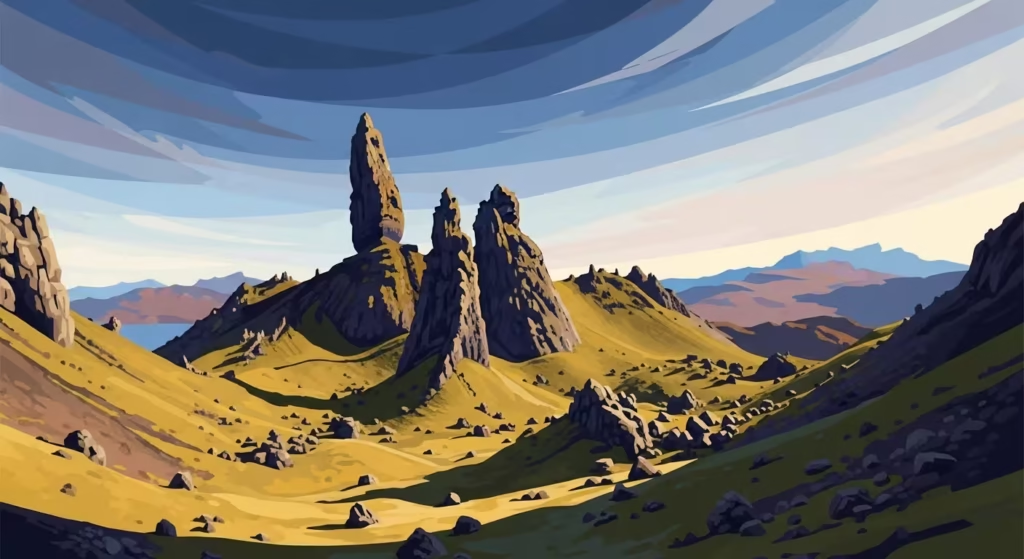
The stark landscapes around Applecross and the Bealach na Bà are regularly used for automotive and adventure shoots, thanks to their winding roads and jaw-dropping views. Dunnet Head, at the northern tip of the mainland, features in travel series and period dramas, celebrated for its windswept cliffs and expansive ocean vistas.
For further inspiration and behind-the-scenes stories of the best films set in the Scottish Highlands, check out article The Top 10 most iconic film locations in the Scottish Highlands.
Music Inspired by the NC500: The Soundtrack of the Scottish Highlands
The North Coast 500 isn’t just a visual feast; it’s also a rich musical landscape inspired by the soul of the Scottish Highlands. Traditional Scottish folk music, with haunting bagpipes, fiddle melodies, and Gaelic songs, deeply resonates with the region’s history and natural beauty.
Events like the Loopallu Festival in Ullapool bring contemporary indie and alternative music to the Highlands, blending modern sounds with traditional influences that create an evocative atmosphere unique to this northern coastline.
Local musicians often draw on the landscape and stories of the Highlands, crafting tunes that echo the wild, dramatic vistas and centuries-old legends that surround them.
For a more immersive experience, several venues along the NC500, such as the Ironworks in Inverness and various ceilidh halls throughout the route, host live traditional and contemporary music sessions that welcome both locals and visitors.
This vibrant music scene adds a rhythmic heartbeat to your travels, where every stop can offer authentic Highland tunes and new sounds influenced by the breathtaking scenery.
Exploring the NC500 with its soundtrack playing in the background enriches the journey, allowing you to connect with the spirit and culture of this magical part of Scotland on a deeper level.
Frequently asked questions about the NC500
How far in advance should I book accommodation on the NC500?
Booking accommodation on the North Coast 500? It’s highly recommended to secure your stay several months in advance, especially during the busy peak season from May to August when places fill up quickly.
Many travellers suggest starting your research as soon as you know your travel dates, aiming to book at least three months ahead, with some of the most popular spots recommending up to six months in advance to guarantee a room (Independent Travel Cats guide).
If you decide to leave it too late, you might find availability limited, especially at sought-after hotels and charming B&Bs, so it’s wise not to leave your accommodation to chance. The official North Coast 500 site also stresses the importance of booking early to have a wider selection and better rates (North Coast 500 tips).
Whether you’re looking for cosy lodges, luxury hotels like Innis a Chro, or budget-friendly hostels, locking in your accommodation early sets you up for a smoother, stress-free journey through Scotland’s stunning Highlands.
So, wherever your NC500 adventure takes you, planning ahead means you won’t miss out on the perfect place to rest after exploring the incredible coastline and landscapes.
What types of accommodation are available along the NC500?
When it comes to where to stay along the NC500, you really have a wonderful range of options to suit your style and budget. If you’re craving a touch of luxury, the exquisite Innis a Chro Luxury Cottages near Eilean Donan Castle are an absolute standout, offering stunning Highland views paired with first-class comfort and thoughtful touches that make it feel truly special.
For those who prefer the cosy charm of a traditional B&B, you’ll find warm Highland welcomes and hearty breakfasts at places like Shandwick House.
For outdoor lovers, campsites and glamping pods provide beautiful settings to sleep under the stars. The Ullapool Campsite offers heated pods with scenic sea views, giving a great mix of nature and comfort.
Self-catering holiday cottages peppered throughout the route ensure flexibility for families or groups who like to set their own pace (Families Can Travel accommodation guide).
Don’t overlook the growing number of Airbnb options across the Highlands, where you can find everything from quaint rural cottages to modern homes in towns, ideal for those who want a homely feel with a local touch. And budget travellers are well-catered for, too, with hostels like the Inverness Youth Hostel offering clean, affordable accommodation in key hubs.
Whether you’re gearing up for plush hotel stays, a rustic camping trip, or a laid-back Airbnb experience, the NC500 has accommodations to help you recharge and make the most of your Highland adventure.
Are there pet-friendly accommodations on the route?
Yes, many accommodations along the North Coast 500 are pet-friendly, so your furry friends can join your Highland adventure too.
For instance, the Mackays Hotel in Wick warmly welcomes dogs and even provides special touches like doggie guides—their pet policy just asks that you inform them in advance and keep your pup on a lead in public areas.
Over near Ullapool, several glamping sites offer dog-friendly pods with stunning sea views, blending comfort with nature.
For a classic hotel experience with your pet, the Kylesku Hotel is beloved for its dog-loving atmosphere and beautiful surroundings—just be sure to check their current pet policies and book early.
The Ulbster Arms Hotel in Thurso also ranks among the top dog-friendly accommodation choices on the NC500, offering comfy rooms and nearby walking routes perfect for you and your pet to explore.
Always remember to check individual policies before booking, as some places may have specific rules or small fees for pets. That way, you and your four-legged friend can enjoy a stress-free, welcoming stay on your North Coast 500 journey.
Can I camp wild along the NC500?
Yes, wild camping is definitely allowed along the North Coast 500 thanks to Scotland’s Right to Roam, but it does come with some important responsibilities.
The key is to follow the Scottish Outdoor Access Code, which means camping discreetly, away from buildings and roads, only staying for one night in any one spot, and leaving no trace whatsoever. For a handy overview, check out this guide on wild camping along the NC500.
Just remember, wild camping doesn’t include campervans or motorhomes, so if you’re travelling with a vehicle, you’ll want to stick to official campsites. These campsites often strike a perfect balance—you can enjoy remote, beautiful locations while supporting local businesses and having access to clean facilities (more on that here).
Also, be very mindful of wildfire risk—avoid lighting open fires and use gas stoves instead. And of course, respect local communities and wildlife by keeping noise down and dogs on leads where necessary.
So while you can enjoy some breathtaking nights under the stars on your NC500 adventure, make sure to keep it responsible and respectful—that way, the stunning Scottish wilderness stays pristine for everyone who comes after you!
What vehicle types are suitable for the NC500?
Cars, camper-vans, and motorhomes can navigate most of the route; however, some narrow mountainous sections such as Bealach na Bà require caution or alternative routes for larger vehicles.
Is public transport available on the NC500?
While the North Coast 500 is famous as a scenic road trip best enjoyed by car or campervan, limited public transport does exist between some of the major towns along the route. For example, bus routes like the 803 and 805 serve areas in Sutherland and Caithness, connecting places such as Durness and Bettyhill with nearby hubs (see bus schedules). However, these services can be infrequent and seasonal, so be sure to check schedules in advance.
Rail travel is also an option if you start in Inverness, which is well connected to UK cities, and you can travel north along the Far North Line to Wick and Thurso (The Trainline info). From there, local buses can help you reach smaller communities, but expect gaps in coverage, especially in more remote areas.
Due to these limitations, hiring a car or campervan remains the most flexible and convenient way to experience the full NC500, giving you freedom to explore little-known gems and travel at your own pace (North Coast 500 Travel Information). If you prefer not to drive, you can also consider guided tours that take care of transport logistics for you.
So, while public transport is available on parts of the NC500, for a truly seamless and spontaneous adventure, a self-driving option is usually your best bet.
When is the best time to do the NC500?
The best time to do the NC500 really depends on what kind of vibe you’re after. If you want to avoid the crowds and soak up some stunning autumn colours, then heading out in September or October is ideal. Plus, the cooler air adds a crisp charm to those dramatic Highland landscapes.
You’ll find more on this sweet spot and why it’s special in this 2026 NC500 Guide, which dives into the seasonal nuances at length. Our NC500 Guide is free and available in PDF format.
Now, if you’re all about those long, sun-soaked days, summer’s your go-to.
Just keep in mind it’s when everyone else seems to descend too, meaning busier roads and spots. And let’s not forget the midges, who are at their cheekiest during summer evenings. Planning ahead by checking what the North Coast 500 official tips suggest can really help smooth your trip.
On the flip side, spring and winter bring their own magic — spring has those fresh blooms and quieter paths, while winter delivers dramatic snow-dusted scenes and even a chance to catch the Northern Lights. But heads up, some facilities slow down or close in those seasons.
How bad are midges and how to avoid them?
Midges on the North Coast 500 can be quite a nuisance, especially if you travel during their peak season from late May to early September. They are most active at dawn and dusk and thrive in warm, still, and humid conditions, particularly near water and sheltered woodlands. While their bites are more irritating than harmful, they can quickly spoil an otherwise perfect day (North Coast 500 top tips).
To avoid midges, it’s best to plan your trip in the shoulder seasons—April, May, or September—when midge activity is lower but the weather can still be pleasant (No Fuss Travel Guides).
When you do travel in summer, taking simple precautions such as using effective midge repellents containing DEET or Picaridin, wearing long sleeves and trousers, and choosing breezier coastal or hilltop locations can keep the bugs at bay because midges struggle to fly in winds above 7 mph (Van Life Family advice).
Additionally, avoiding still, shaded areas like dense forests or damp ground during the most active times around dawn and dusk helps reduce exposure. Some travellers find that portable midge-repelling devices and nets for heads or tents provide extra protection, especially if camping overnight (Compass Campers road safety).
Armed with these tips, you can significantly minimise midge encounters and maximise your enjoyment of Scotland’s spectacular NC500 route.
What should I pack for the NC500?
Packing for the North Coast 500 requires careful thought due to Scotland’s famously variable weather and the remote nature of many stops.
Waterproofs and layers are absolutely essential; a reliable waterproof jacket and trousers will keep you dry and comfortable regardless of sudden rain showers or chilly winds, as highlighted in detailed packing guides like Katie Goes’ local advice.
The midges—small biting insects especially prevalent in summer evenings—are notorious for interrupting outdoor enjoyment, so packing effective midge repellent spray or even a portable device like the Thermacell Halo Mini is highly recommended to keep these pests at bay (Arnold Clark Rental essential pack).
Since mobile signal can be patchy on parts of the NC500, downloading offline maps and bringing a power bank to keep devices charged is very helpful, ensuring navigation stays reliable far from towns and petrol stations (Big Little Getaways packing tips).
If you plan to wild camp or stay at remote campsites, bring appropriate camping gear including a tent, sleeping bag, portable stove, and utensils.
Daypacks, sturdy walking boots, and quick-dry clothes prepared for hikes away from the roadside will greatly enhance exploration opportunities (North Coast 500 official advice).
Adding items like a reusable water bottle to reduce plastic waste, sun protection, and small first aid supplies makes for a well-rounded kit, promoting both comfort and sustainability during your adventure.
Preparing with these essentials ensures you can embrace Scotland’s dramatic landscapes and ever-changing weather, making your NC500 journey safer, more comfortable, and truly memorable.
Can I customise my NC500 itinerary?
Absolutely, you can customise your NC500 itinerary to suit your personal schedule and interests.
Whether you have a few days or a full week, the Inverness Design Studio Ultimate Guide offers detailed advice and flexible route options that allow you to tailor your trip.
This guide helps you prioritise key attractions, adjust driving times, and include activities that match your unique preferences, ensuring your NC500 experience is personalised and fulfilling.
With options ranging from scenic detours to cultural stops, you can create an itinerary that balances adventure with relaxation according to what matters most to you.
How long does the NC500 usually take?
Wondering how long you should set aside for the North Coast 500? Most travellers agree that giving yourself about 5 to 7 days lets you truly savour the route without feeling rushed. Sure, you could technically drive the whole 516 miles in one go (which would take around 8 to 9 hours), but then you’d miss out on all those breathtaking stops and hidden gems nestled along the coast.
If you want a solid overview, Compass Rentals has a great guide breaking down how much time you should really give yourself for this adventure. And if your schedule is tighter, there are even 3-day itineraries available—like the one from Rabbies—though keep in mind, that means you’ll be racing through some of the best bits.
It’s all about balancing your time with what you want to see and do. For extra planning help and tips, Scotland’s official tourism site, VisitScotland, has some handy advice on putting together your perfect NC500 trip. So, whether a quick weekend or a relaxed week-long jaunt, you can tailor your trip to suit you perfectly.
What are some hidden gems on the NC500?
Some hidden gems on the North Coast 500 offer a chance to stray from the well-trodden path and discover Scotland’s spectacular landscapes and charming villages.
For instance, Torridon is a small village nestled at the foot of the Torridon Hills, famous among hillwalkers for its stunning mountain views and easy access to outdoor activities like hiking and kayaking.
Just beyond Torridon, a narrow, scenic detour to the remote village of Diabaig rewards adventurous drivers with breathtaking harbour views and a cosy seaside café, Gille Brighde, making it a perfect off-the-beaten-track stop (Watch Me See’s guide to Torridon and Diabaig).
Another spectacular hidden treasure is Achmelvich Bay, renowned for its pristine white sand and crystal-clear waters, perfect for spotting porpoises and dolphins or enjoying water sports. Similarly, Strathy Bay offers some of the wildest and most beautiful beaches, ideal for quiet reflection away from crowds, while Sango Sands Beach feels like a Caribbean paradise with its golden sands and inviting blue waters (Robbie Roams highlights Achmelvich and Strathy Bay).
If you venture a little inland, you’ll find the artistic village of Achfary with its quaint snow-white defibrillator telephone box, plus the moody and dramatic Loch Eriboll, where you might arrange a private viewing of local artist Lott Glob’s workshop (Secret Scotland on Loch Eriboll and Achfary).
For natural beauty lovers, a minor detour to the Allt Chranaidh Waterfall, also known as the Wailing Widow Falls, offers a stunning gorge-side walk, accessible from a small lay-by nearby.
Further along the rugged route between Newton and Lochinver, the charming village of Drumbeg provides a welcome café and facilities, along with the secretive but delightful Secret Tea Garden, ideal for a comforting slice of cake and hot chocolate.
These hidden gems showcase the diverse allure of the NC500 beyond its famous landmarks, encouraging travellers to explore the quiet corners of Scotland’s Highlands for a truly memorable adventure.
What driving tips are recommended for single-track roads?
When driving the North Coast 500, you’ll encounter many single-track roads which can be quite different from typical highways. These roads are usually only wide enough for one vehicle, but they include passing places to let cars traveling in opposite directions safely pass each other.
It’s important to drive slowly and stay alert, maintaining a speed that allows you to stop within the visible distance ahead, especially since these roads are winding and the weather can change quickly. Guides on road safety on the NC500 stress the importance of patience and vigilance in these areas.
Passing places are clearly marked, and a key tip is that the vehicle nearest to one should pull in and wait, allowing the other car to pass. If the passing place is on the opposite side from you, position yourself opposite it to make the passing easier. Sometimes, you may need to reverse to a passing place to create enough space.
This is a common situation and is well explained in the official NC500 safety tips, which emphasise the importance of courteous driving.
Avoid stopping or parking in the passing places as these are essential for traffic flow. Instead, try to find designated lay-bys or parking areas, which helps avoid blocking the road for others.
This commonsense advice is also a top point in popular guides about mistakes to avoid when driving the NC500 and ensures all drivers can enjoy a stress-free journey.
For those driving larger vehicles like campervans, reversing on these narrow roads is sometimes necessary. Real travel blogs provide personal accounts and practical advice on how to manage this safely.
Overall, slow, steady driving combined with patience and respect for other road users helps make navigating the NC500’s single-track roads an enjoyable and memorable part of your Highland adventure.
Is parking easy for motorhomes and campervans?
There are designated parking areas and campgrounds along the North Coast 500, but many of the popular spots fill up quickly, especially during peak season. Planning ahead is therefore essential to secure your place and avoid disappointment.
For example, the John O’Groats Caravan and Camping Site is a family-run site offering tent and motorhome pitches close to one of the route’s iconic landmarks, but booking early is recommended as it fills fast.
Similarly, eco-friendly sites like Ferry View Campsite near Thurso provide essential facilities and a welcoming atmosphere, yet spaces are limited, making reservations advisable.
For those seeking a more comfortable experience, glamping options such as NC500 Pods offer luxury accommodation at key points along the route, blending convenience with stunning natural surroundings.
Besides campsites, there are also designated parking areas where self-sufficient campervan travellers can rest overnight, but these too get busy during popular travel times, so pre-planning your stops using resources like NorthCoast500’s official accommodation guide is highly beneficial.
Ensuring you book or reserve spots in advance not only guarantees a place to rest but also lets you focus on enjoying the breathtaking scenery and cultural experiences of your journey without logistical stress.
Are electric vehicle charging points available on the NC500?
Electric vehicle (EV) charging points are available along the North Coast 500, making it increasingly feasible to complete the route sustainably in an EV.
Key towns like Inverness provide multiple charging stations, including public car parks and accommodations, offering a mix of rapid and standard chargers.
Other charging locations along the route include Dunrobin Castle and Castle of Old Wick, with infrastructure continually expanding.
To ensure smooth travel, EV drivers should plan their charge stops carefully using apps like ChargePlace Scotland, Zap-Map, or A Better Route Planner.
These tools help locate chargers, check their status, and manage charging times. Purchasing an access card such as the ChargePlace Scotland card allows for convenient payment without relying on mobile internet or apps.
Despite improvements, some remote areas might still lack reliable charging, so having contingency plans is wise. Proper planning guarantees a rewarding experience driving the NC500 in an electric vehicle while enjoying the spectacular Highland scenery sustainably.
Are there dining options along the NC500?
Dining options along the North Coast 500 are varied, from local cafés to fine dining establishments specialising in fresh seafood.
For an exceptional seafood experience, consider visiting Crofter’s Kitchen in Scourie, a beloved outdoor eatery nestled by Scourie Beach, known for its sustainable, locally sourced seafood and stunning sea views.
Another great stop is the Seafood Shack in Ullapool, famous for haddock wraps and a friendly atmosphere.
For elegant dining with breathtaking loch views, the Kylesku Hotel Restaurant is a must-visit, offering creel-caught lobster and crab delicacies.
Other noteworthy places include the Applecross Smokehouse, famed for its whisky-smoked salmon, and Lochinver Larder, celebrated for its gourmet pies and seafood dishes.
Be sure to check seasonal opening times as some venues may close or reduce hours in the off-peak seasons. Local tourism websites and official NC500 resources provide updated information to help plan your culinary stops along the route.
These dining options not only provide delicious food but also offer a true taste of Highland hospitality and fresh regional produce, perfectly complementing your NC500 adventure.
How family-friendly is the NC500?
The NC500 is very family-friendly, offering many activities and attractions suitable for all ages. Families can enjoy the Golden Eagle Zip Line at Ceannabeinne Beach, a thrilling but safe experience for kids over 20kg, featuring zipline flights with amazing ocean views.
Wildlife boat tours like the Dolphin Spirit Boat Tour in Inverness provide unforgettable encounters with dolphins, seals, and otters, perfect for the whole family.
The route includes kid-friendly walks such as the Fairy Glen Waterfalls and the Big Burn Walk in Golspie, featuring gentle terrain and scenic spots.
Children will also enjoy city-based activities like exploring the Ness Islands in Inverness, with quaint suspension bridges, and discovering the miniature Ness Islands Railway at Whin Park.
Historical sites like Culloden Moor provide engaging, interactive learning opportunities for older children. Family-friendly accommodations are widely available along the route, many welcoming children and pets, ensuring comfortable stops throughout your adventure.
Planning activities suited to your children’s interests will make the NC500 a memorable journey for the whole family.
Is cycling the NC500 viable?
Cycling the NC500 is viable but challenging, requiring good fitness and thorough planning due to its rugged terrain and some remote sections.
The route covers approximately 516 miles with a significant elevation gain of around 11,423 meters (37,500 feet), including steep climbs like the famous Bealach na Bà pass, which tests even experienced cyclists.
The cycling paths largely follow the main roads but may include quieter alternative routes, especially on the west coast, for a more scenic and peaceful experience.
The following video from Cycling366’s Youtube channel documents the experience of cycling the NC500 on a bicycle.
Cyclists usually choose to travel clockwise to tackle the hilly western sections first. Daily distances can be demanding, and the mix of weather, wind, and narrow roads adds to the difficulty, so careful preparation is essential.
It is advisable to plan your daily stages realistically, allowing time for rest and enjoying the spectacular scenery.
For bike repairs, several towns along the route such as Inverness, Ullapool, and Thurso have bike shops like Cycle King Inverness, Ullapool Bike Shop, and Thurso Cycles, providing essential maintenance and repair services to keep you on the road.
How can I travel sustainably on the NC500?
Follow the Scottish Outdoor Access Code, support local businesses, minimise waste, and camp responsibly.
Listen to “The 2026 NC500 Guide” Episode on the Scottish Design Podcast
Explore the North Coast 500 from a new angle with our engaging podcast episode, “The NC500 Guide.”
The episode dives deep into essential travel tips, must-see destinations, and insider advice to enhance your journey around Scotland’s spectacular coastal route. Perfect for road trip planners, adventurers, and families, the podcast complements our written guides by offering expert insights, practical information, and inspiring stories you can enjoy on the go.
Tune in and let us help you make your NC500 experience unforgettable—whether you’re preparing for your first trip or seeking fresh inspiration for a return visit.
The 2026 North Coast 500 Guide – Your Ultimate Visual Companion
Experience Scotland’s breathtaking North Coast 500 like never before with “The 2026 North Coast 500 Guide” YouTube video. This immersive visual journey reveals the stunning landscapes, historic landmarks, and hidden gems along the iconic 516-mile route.
Whether you’re planning your trip or simply dreaming of the Highlands, this video showcases everything from dramatic coastal cliffs and charming fishing villages to ancient castles and pristine beaches.
Accompanied by expert commentary, insider tips, and inspiring stories, it’s the perfect companion to our written guide and podcast.
Watch now and start planning your unforgettable NC500 adventure today — all brought to life by the Inverness Design Studio.
Ready to Embark on Your NC500 Adventure?
The North Coast 500 offers more than just a road trip—it provides an immersive journey through some of Scotland’s most dramatic landscapes, rich history, and warm hospitality. By using this comprehensive guide, you’re equipped to create an experience that matches your travel style while discovering hidden gems most visitors miss.
Remember that the true spirit of the NC500 isn’t about checking off attractions but embracing the freedom of the open road, connecting with nature, and creating memories that will last a lifetime. Whether you choose to complete the route in 5 days or 10, travel by campervan or car, during summer or winter, this spectacular route will leave you forever changed.



